A saw is a simple enough instrument, right? After all, you just have to move it hard enough, and it cuts through the material quickly.
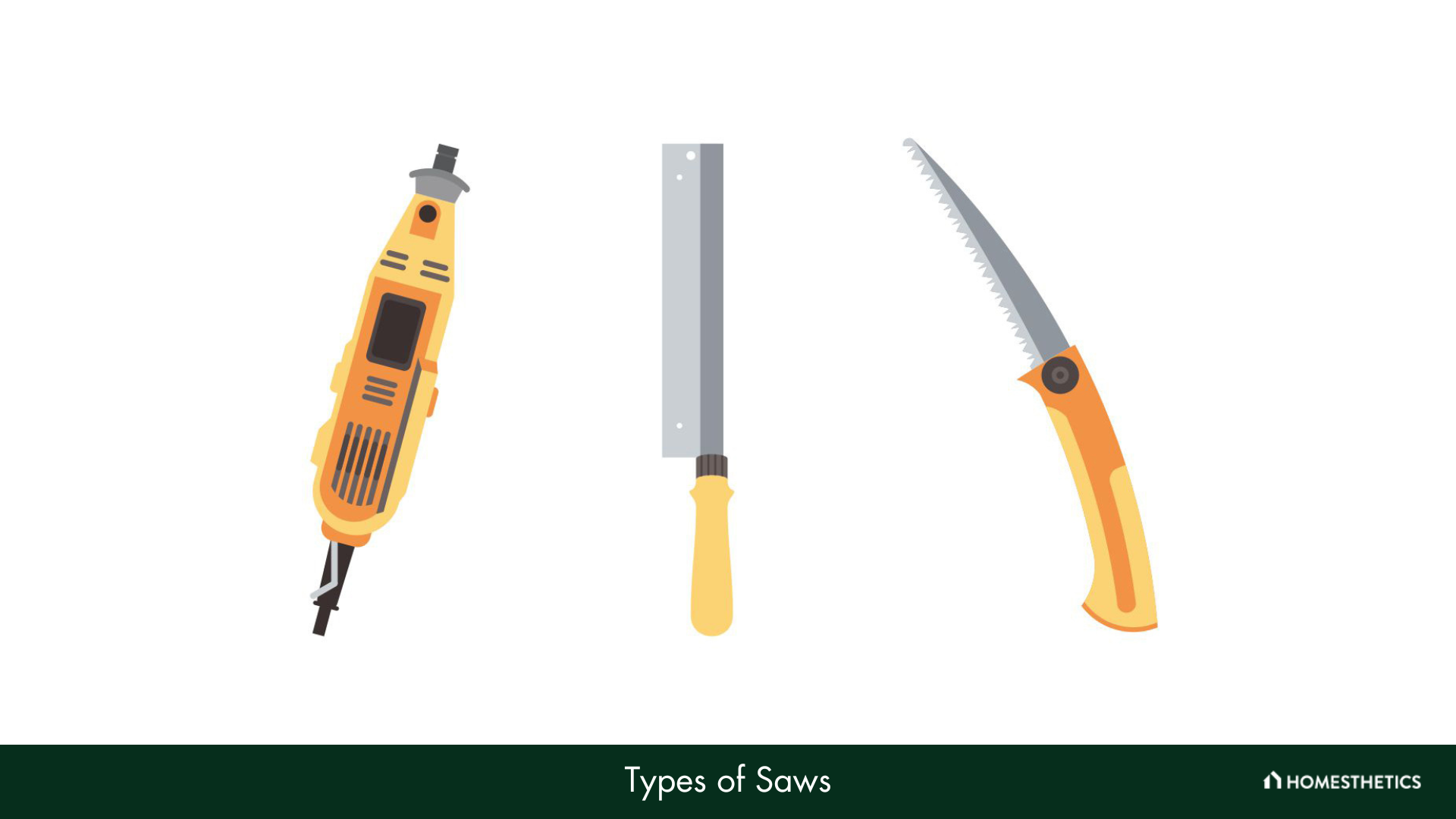
If you’re one of the many people who think along the above lines, then think again. A saw is a very specialized piece of equipment any handyman (or woman) can have in their toolbox. Simple yet effective, saws are perfect cutting instruments that get the job done.
However, if you try to think about the total number of saws in the market, the results can be mind-boggling. Not only are there dozens of saw types, but each has a different name and use. What’s more, they can also be segregated based on the kind of power they use and the material they cut.
In today’s comprehensive guide, we’re going to list some of the different saw types, along with pictures. So, stick around with us till the end.
Different Types of Saws
Hand Saws
A hand saw, as the name suggests, is meant for use by the hand. Powered by pure muscle, hand saws come in various avatars such as Hacksaw, Bow saw, and Veneer saw. In this section, we’re going to explore some of the useful types of hand saws.
-
Backsaw
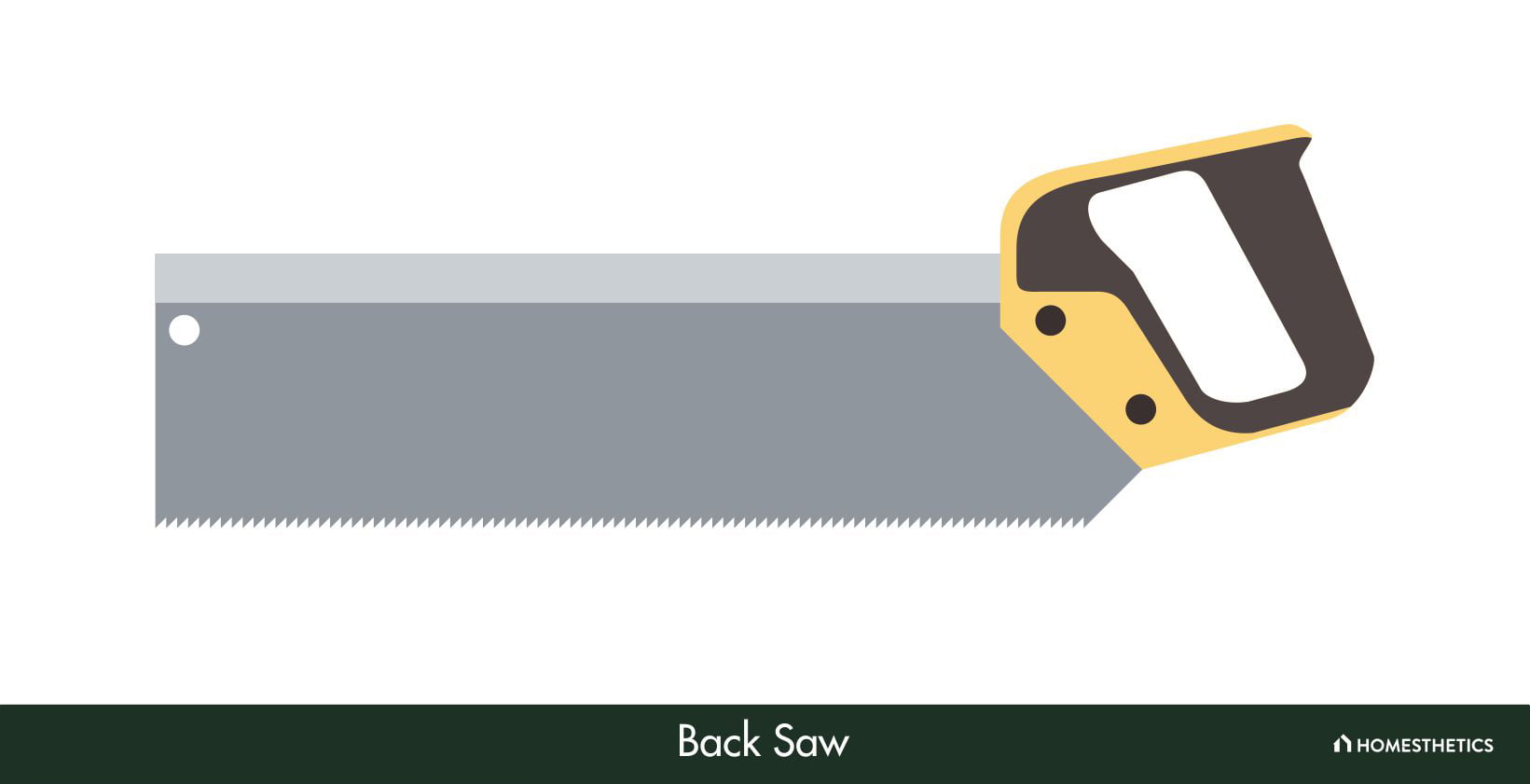
We begin our list with the Backsaw, which is characterized by its small size as compared to other saws, and narrower blade. A Backsaw is called so because it sports a reinforced back, which provides it with added strength while making cuts.
Backsaws are most frequently used with miter boxes and can provide consistent straight cuts. They are also useful when you need to cut corners at 45 or 90 degrees. Based on the region of use, a Backsaw is also called a Tenon saw, or a Miter saw.
-
Bow Saw
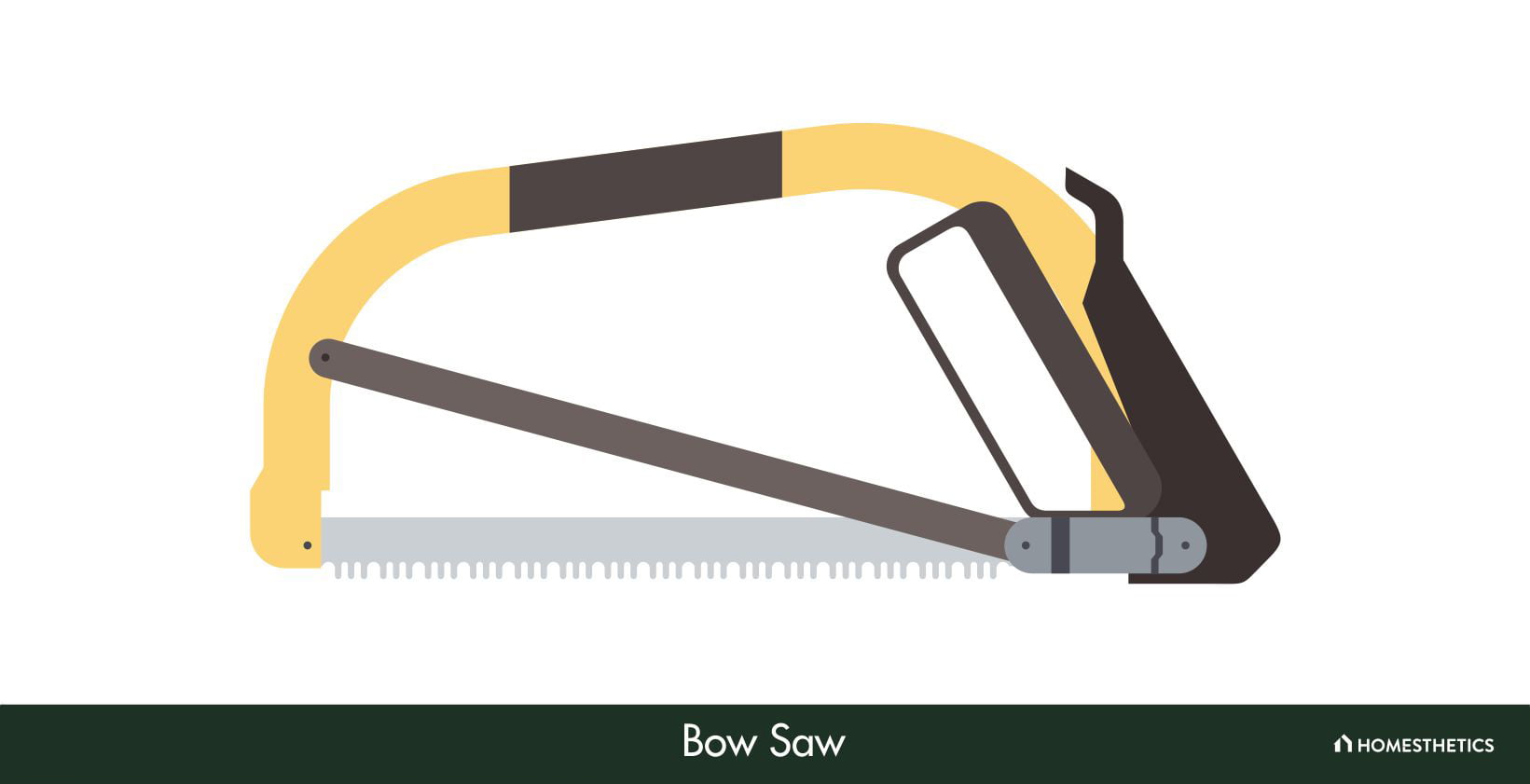
A Bow saw is also known as Swede saw, Finn saw, or Bucksaw. Called so because of its peculiar bow shape, a Bowsaw is perfect for making straight as well as curved cuts. The saw has a long blade, and the teeth are crosscut to remove materials from the path of cutting.
When it comes to usage, Bow saws are better used outdoors than indoors. Outside of your home, a Bow saw can come in handy for a lot of things such as trimming and cutting trees, shaping logs, and making otherwise rough cuts.
-
Coping Saw
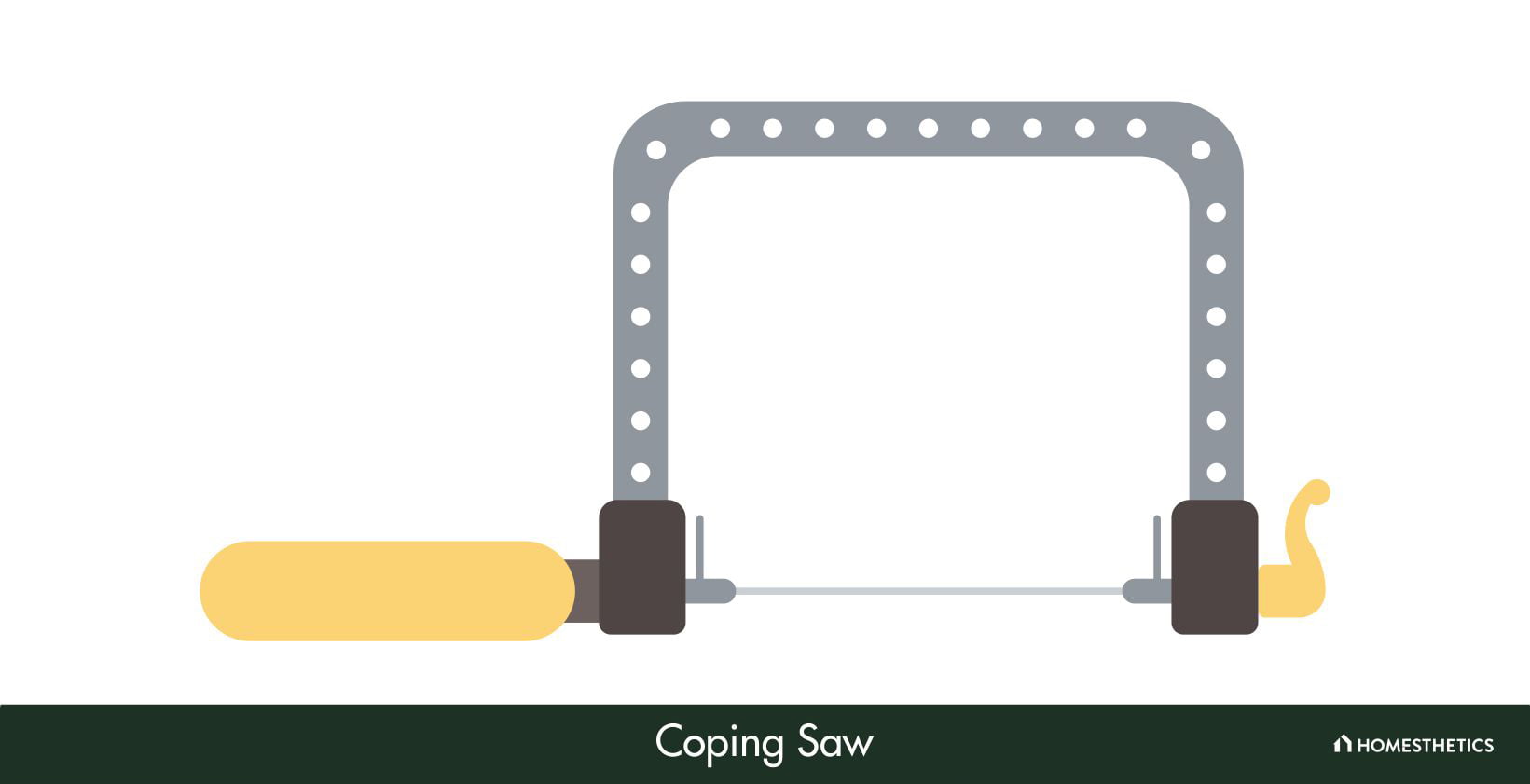
One can easily recognize a Coping saw from its characteristic D-shaped frame and the thin yet durable blade. A simple enough arrangement, the device is extremely useful for cutting metal as well as wood.
One of the most exciting features of a Coping saw is the removable blade fixture. This can be used to change the type of blade as and when required. If you’re looking for a saw to use in work such as scrolling or molding, or any job that requires precise and fine cuts, then a Coping saw might be just right for you.
-
Crosscut Saw
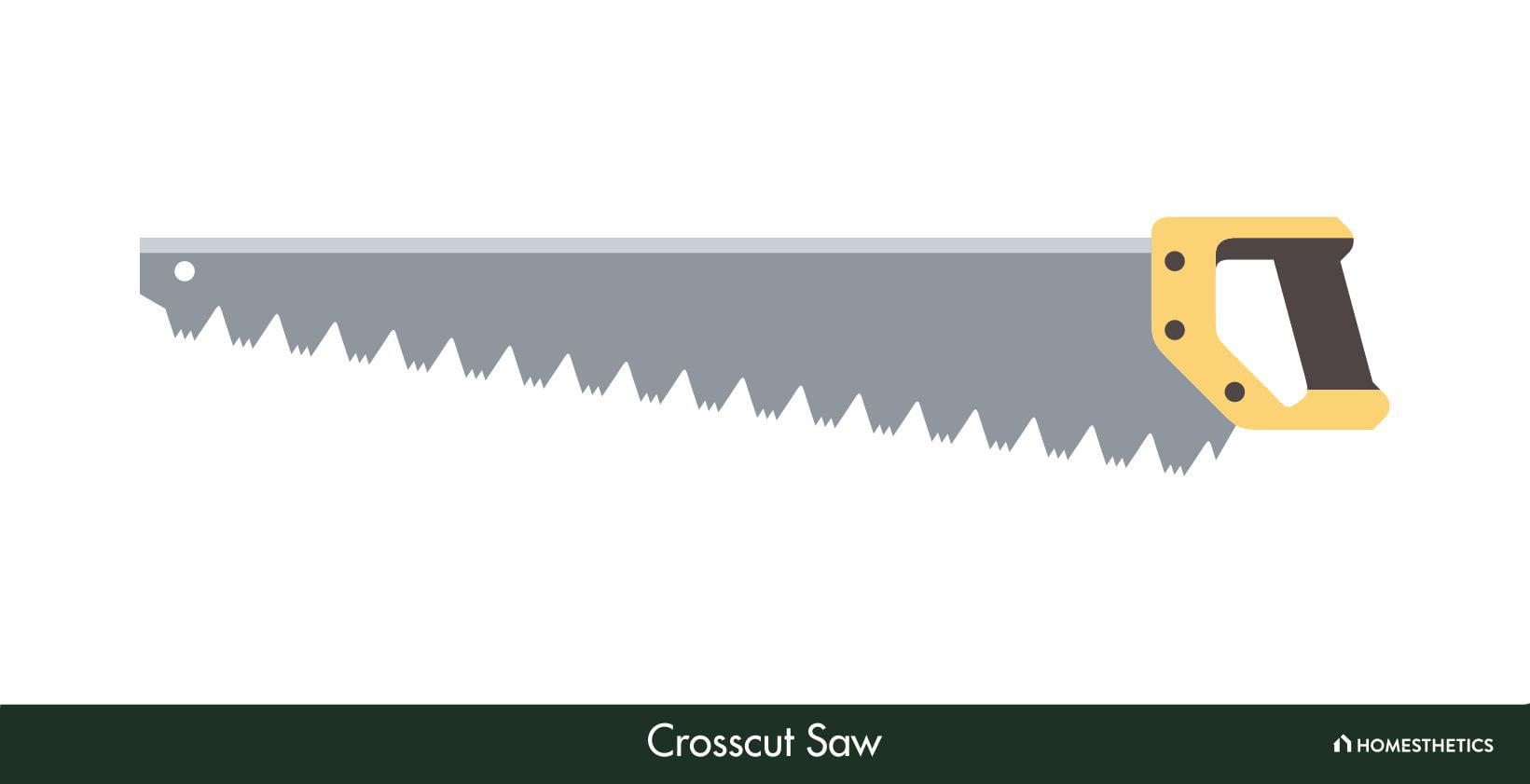
Perfect for indoor as well as outdoor use, a Crosscut saw can be easily recognized by its thicker blade and large, crosscut cutting teeth. Available in both large as well as small sizes, a Crosscut saw is just right for making rough woodcuts.
Whether you’re using a two-handle Crosscut saw for felling trees or want a device that’s fit for splitting wood, this is the best type of saw that you can get. Remember, however, that this is a device for making rough cuts, so don’t expect a pearly finish.
-
Fret Saw

Similar to a Coping saw in design, a Fret saw is distinguished by a larger frame that’s attached to a thinner, more delicate blade. The Fret saw can be used for making tighter cuts and more delicate curves than the Coping saw.
Although this saw can be used to make intricate cuts in wood, it must be remembered that the Fret saw blade cannot be rotated. This means you’ll have to adopt awkward cutting positions during the operation. Also, the blade of this saw type is pretty fragile, and incorrect handling can easily break it from the middle. So it’s best to take care.
-
Hacksaw
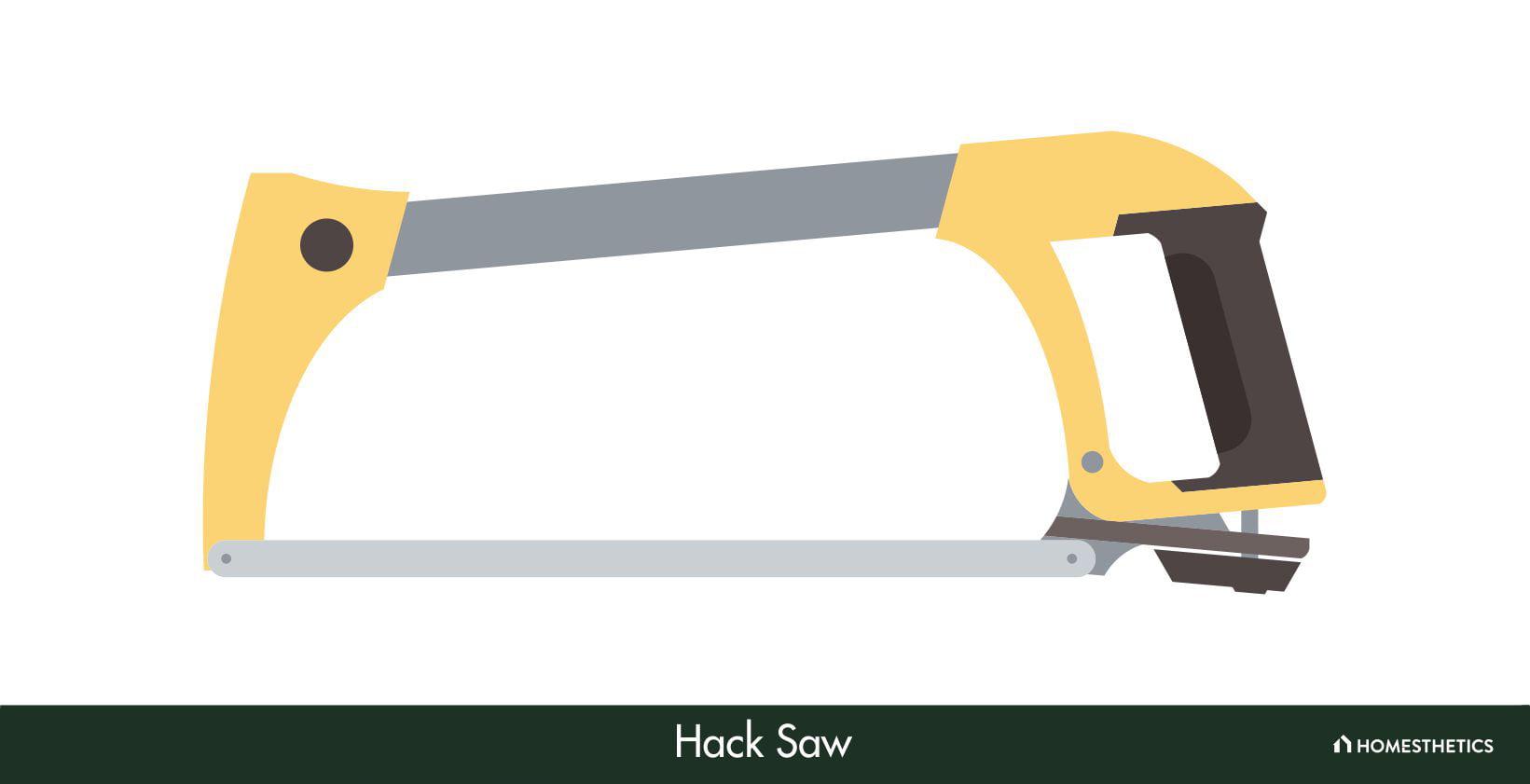
Hacksaws are versatile saws and can be used to cut metal, wood, and plastic with equal ease. They are lightweight and hence can be easily carried around in any toolbox.
The hacksaw sports a C-shaped frame together with a fine blade that’s held by the framework. Hacksaw blades usually have up to 32 teeth per inch and are particularly suited for fine and straight cuts. However, as the Fret saw, the Hacksaw blade can also break unless operated carefully, so extra precaution is needed to maintain the right cutting angle.
-
Japanese Saw
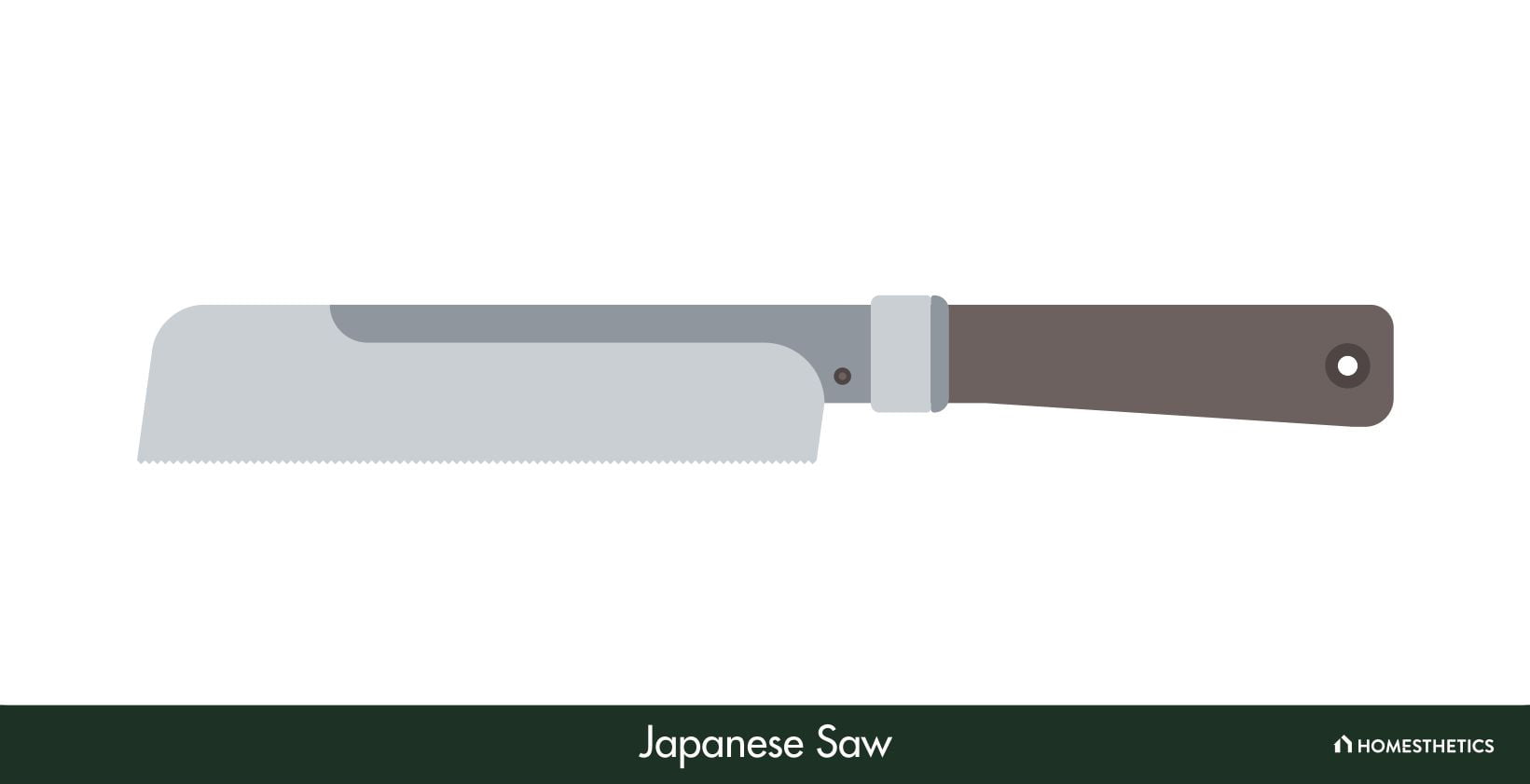
Japanese saws are used for traditional Japanese woodwork and are available in three types: kataba, dozuki, and ryoba. These types of saws usually have a strong blade together with a single handle.
Japanese saws have a significant advantage over Western saws in that due to their thin and precise construction, they can easily reach positions that aren’t possible for other saws. Plus, they leave lean, accurate cuts that get the job done correctly.
Japanese saws have a combination of crosscut and rip-type teeth that allow users to cut through softwood easily. However, this type of saw can’t be used to cut hardwood, which limits its usability to no small degree.
-
Keyhole Saw

A Keyhole saw is a simple arrangement that consists of a roundish handle attached to a single, pointed blade. This type of saw is also known by other names such as Jab saw and Alligator saw.
The purpose of a Keyhole saw is to cut circular patterns and make curved cuts. This type of saw is very lightweight and can be easily carried in any toolbox. These saws come in the following types: retractable blade and fixed blade and can be used for making delicate cuts in walls.

A Pruning saw is used precisely for what it sounds like pruning and making cuts in both directions. This saw typically has blades that are anywhere between 13 to 15 inches long, and are attached to a curved handle that resembles a “pistol grip.”
The blade of a pruning saw is curved, and the coarse teeth are designed to cut when moved in either direction. This allows the saw to cut through the target material faster. Perfect for home jobs, Pruning saws can also be used for topiary and landscaping services.
-
Rip-cut Saw

Also known as a hand saw, this is the most common type of saw used for cutting wood. Carpenters mainly use these saws for all kinds of framing and wood removal tasks.
Usually, Rip-cut saws have a lesser number of teeth per inch as compared to other saws. These are filed to sharp points for removing wood easily. They seem very similar to the Crosscut saws, but there’s a significant difference between the two, as experts know.
For example, Crosscut saws cut perpendicular to the wood grain, while Rip-cut saws cut parallel to the grain. Also, in a Rip-cut saw the teeth are angled at eight degrees, while for Crosscut saws, the angular inclination is about fifteen degrees. Plus, Rip-cut saws give you a more delicate cut as compared to the Crosscut variant.
-
Veneer Saw
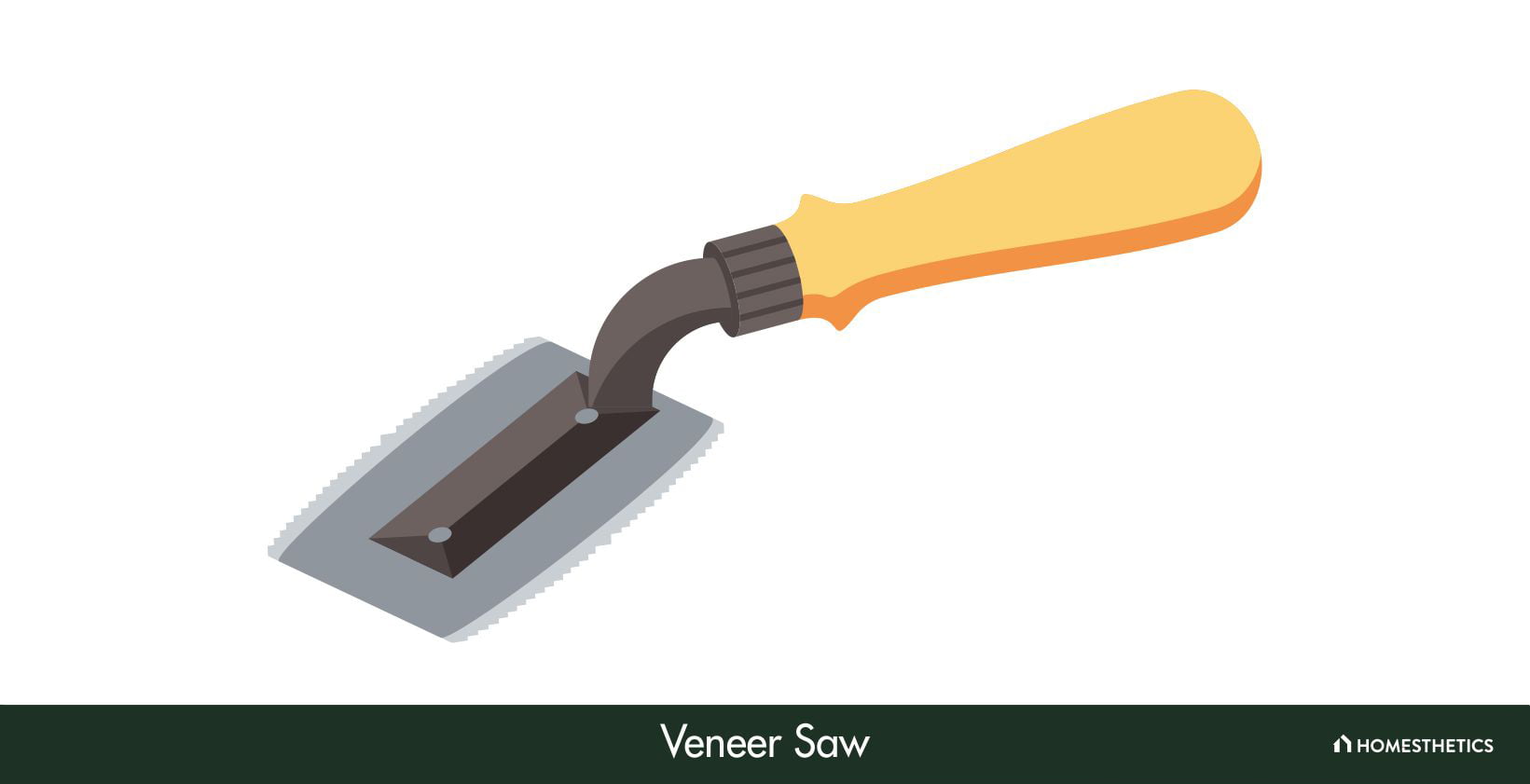
Specially crafted with a short, double-edged blade, the Veneer saw is a must-have for veneering tasks. Each blade edge has about 13 teeth per inch, and the saw has a roundish handle that makes operating it a cinch.
When working with veneered surfaces, it’s essential to use a Veneer saw to achieve the desired results. Ordinary saws can’t cut through wooden veneers easily, which is where the utility of the Veneer saw comes in.
-
Wallboard Saw
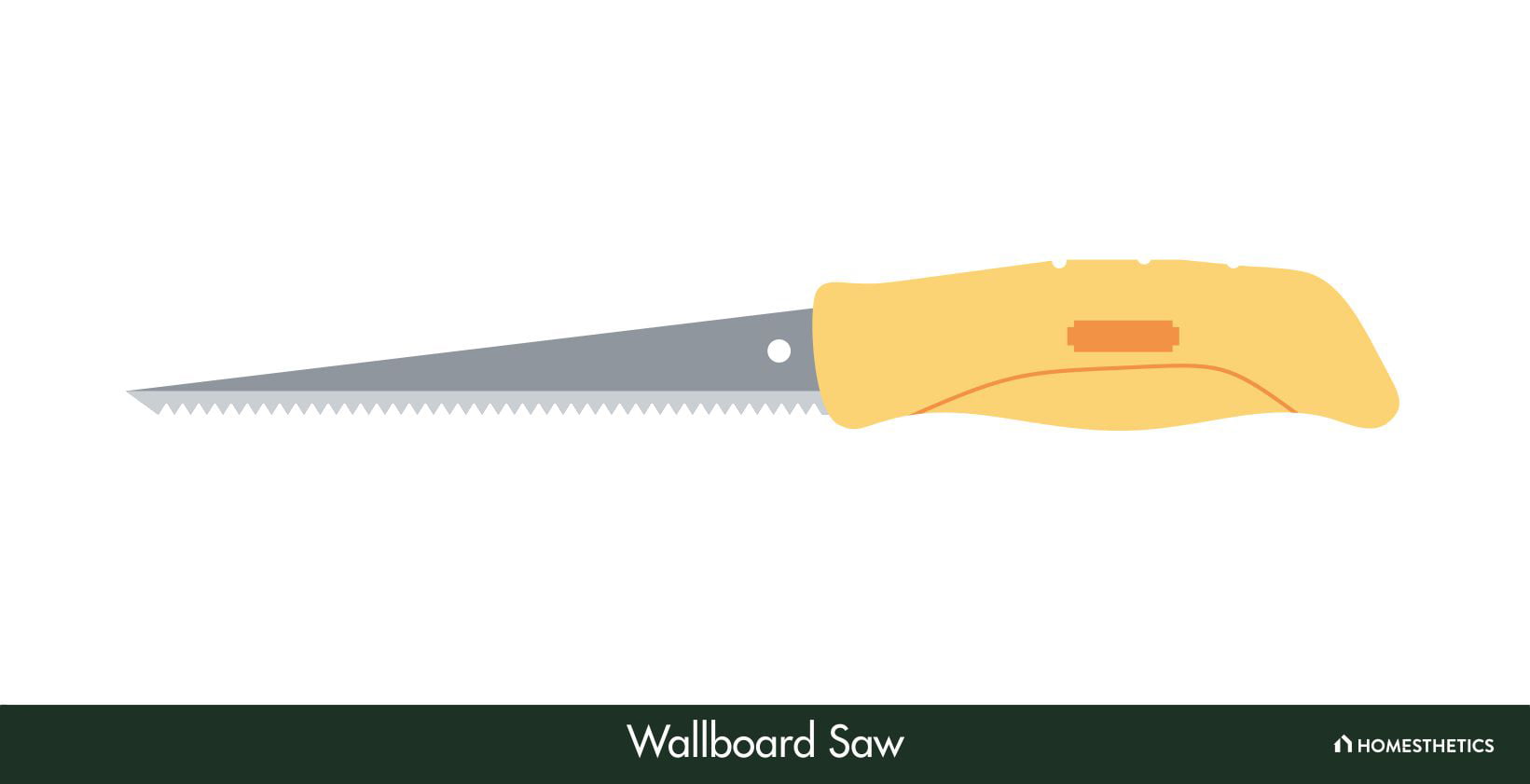
Often power tools need a starting hole in a wooden panel, and for this purpose, the Wallboard saw is a perfect choice. It’s constructed similarly to the Keyhole saw but has a blade that’s shorter and wider.
Another defining characteristic of Wallboard saws is that they have fewer teeth per inch when compared to the Keyhole saw. This saw is double-edged by design but maybe single-edged as well.
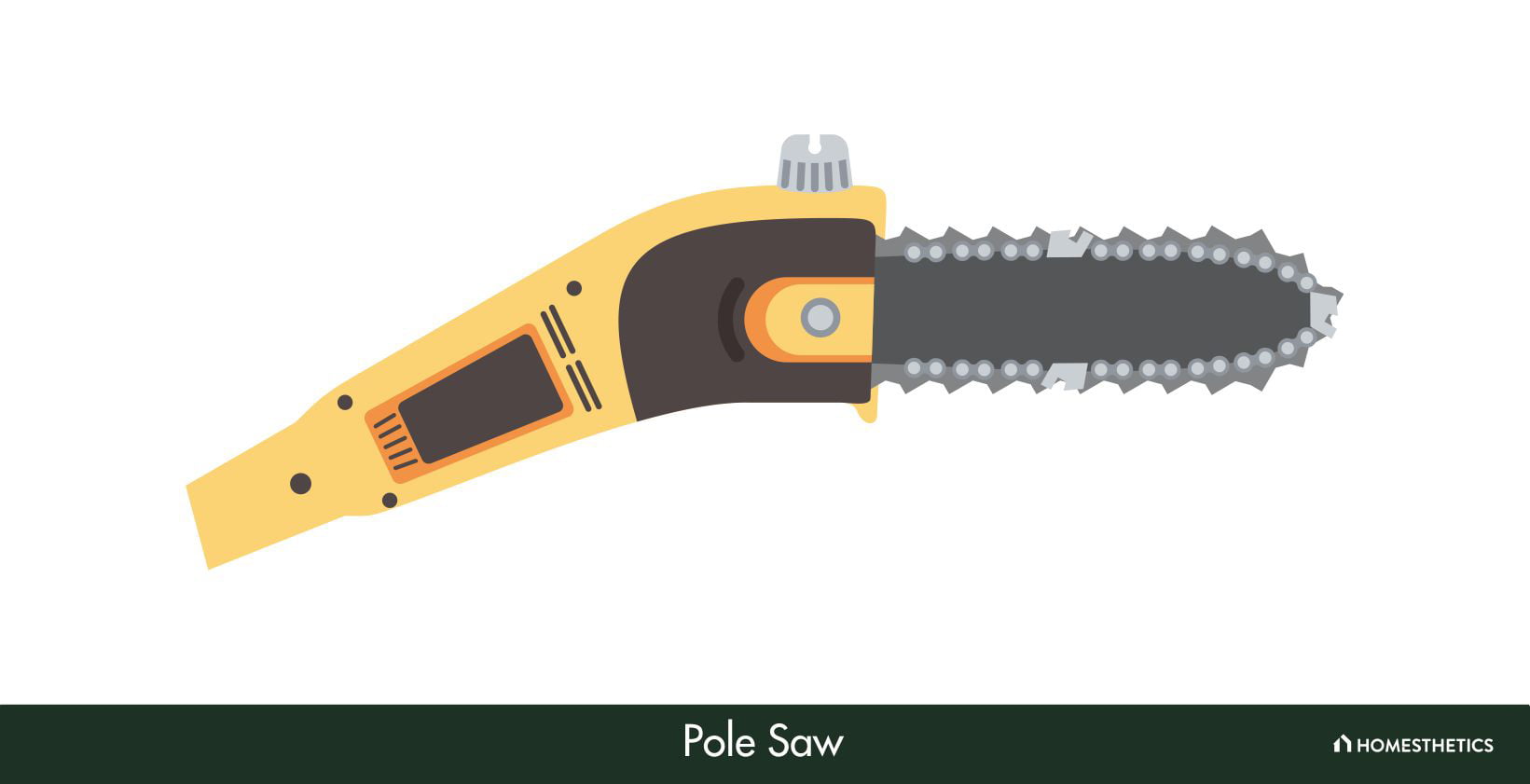
This is a rather ingenious contraption that’s used for cutting and pruning tall trees. The saw has a pruning blade that’s six to eight inches long and is attached to a telescopic pole extending to about sixteen feet.
Pole saws are primarily used for cutting tree branches and pruning excess growth at extended heights. Although traditionally hand-powered, modern versions of these saws do have motorized attachments that make the operation easier.
-
Wire Saw
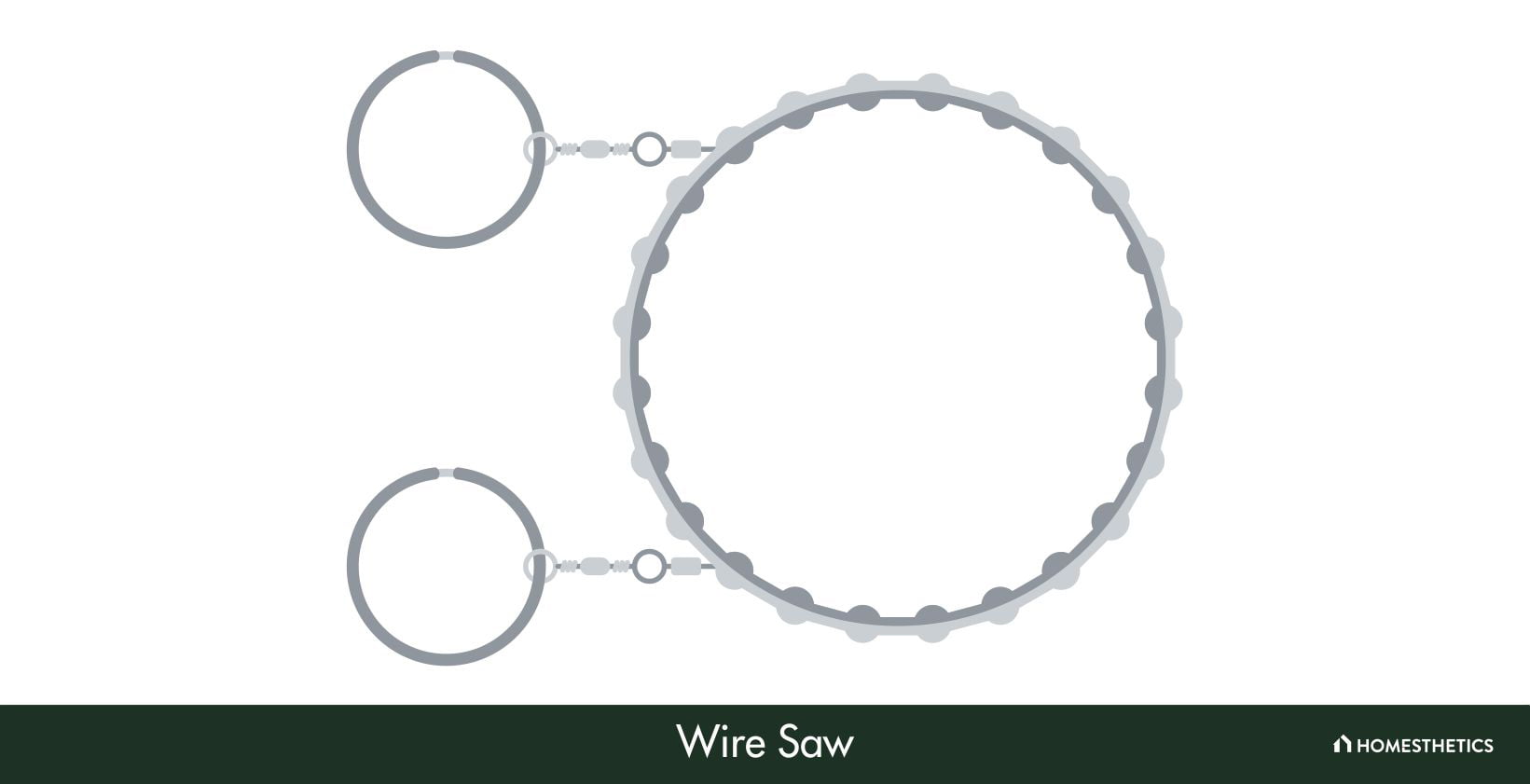
Wire saws are continuous cutting instruments that make use of metallic cables for cutting through hard materials. Although some Wire saws used in factory settings are motorized, they are usually operated by hand for cutting in and around construction sites and quarries.
A wire saw consists of a pair of rings (metallic typically) attached to a hard wire that has serrations that enable the cutting of materials. This type of saw is usually used by a pair of operators working together to make a cut.
-
Camping Saw
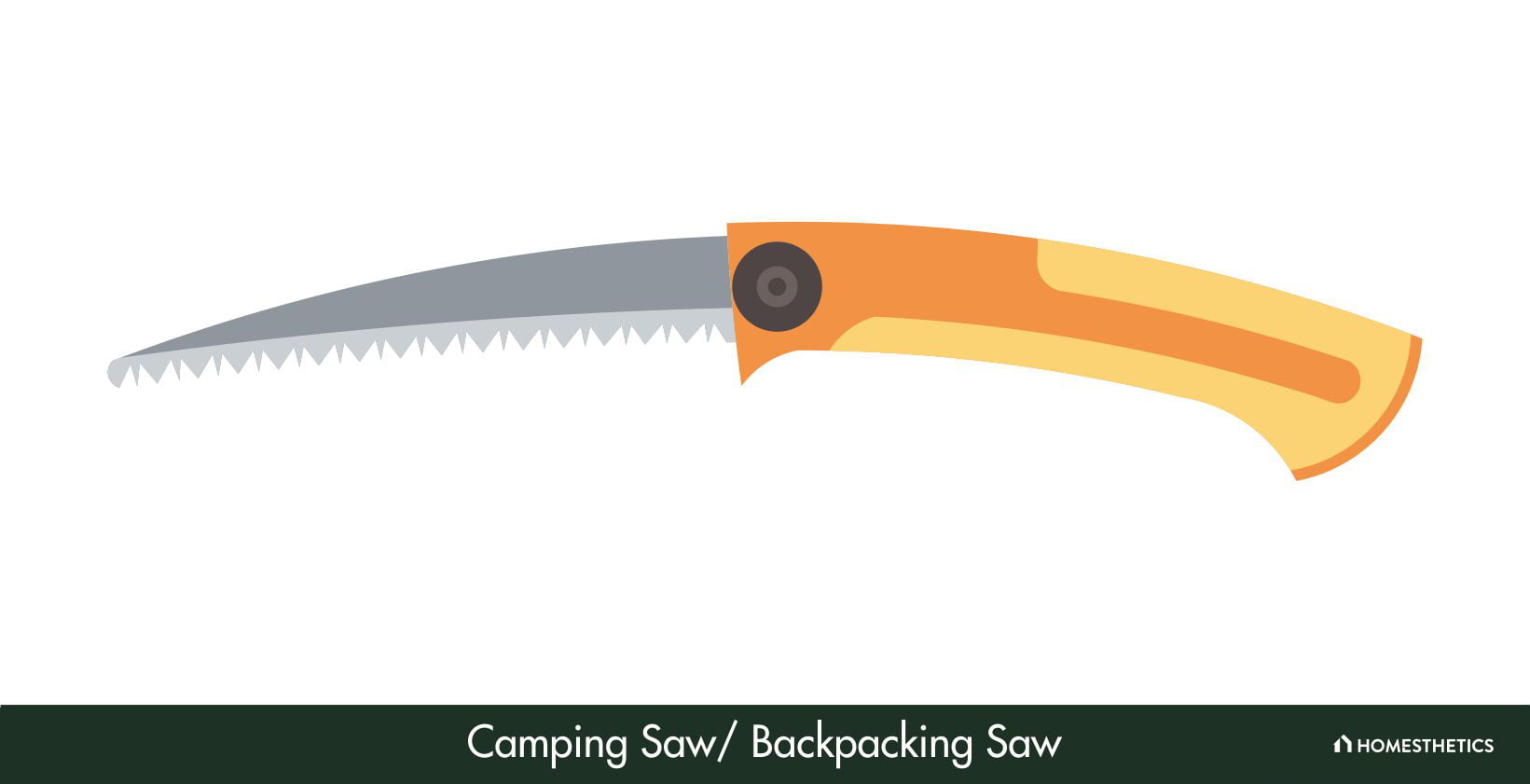
The final entrant in the Hand saw category is the Camping saw, also known as a Backpacking saw. As the name suggests, this type of saw is best suited for camping trips and can be easily packed with your luggage.
Similar to a curved knife, the saw has sharp cutting teeth that can be used to prune away branches or chop firewood with equal ease. What’s more, many models of the saw are foldable, which makes them extra portable.
With that, we come to the end of our list of hand-held saws. But don’t think we’re done yet; in the next section, we’re going to introduce you to some more saw types that you’ll find irresistible.
Power Saws
As opposed to a hand-held saw, a power saw is an electrically operated motorized device that makes the task of cutting easy. Power saws aren’t exactly hand-saws attached to a motor, but rather have separate characteristics of their own. The following are some of them explained.
-
Stationary Bandsaw
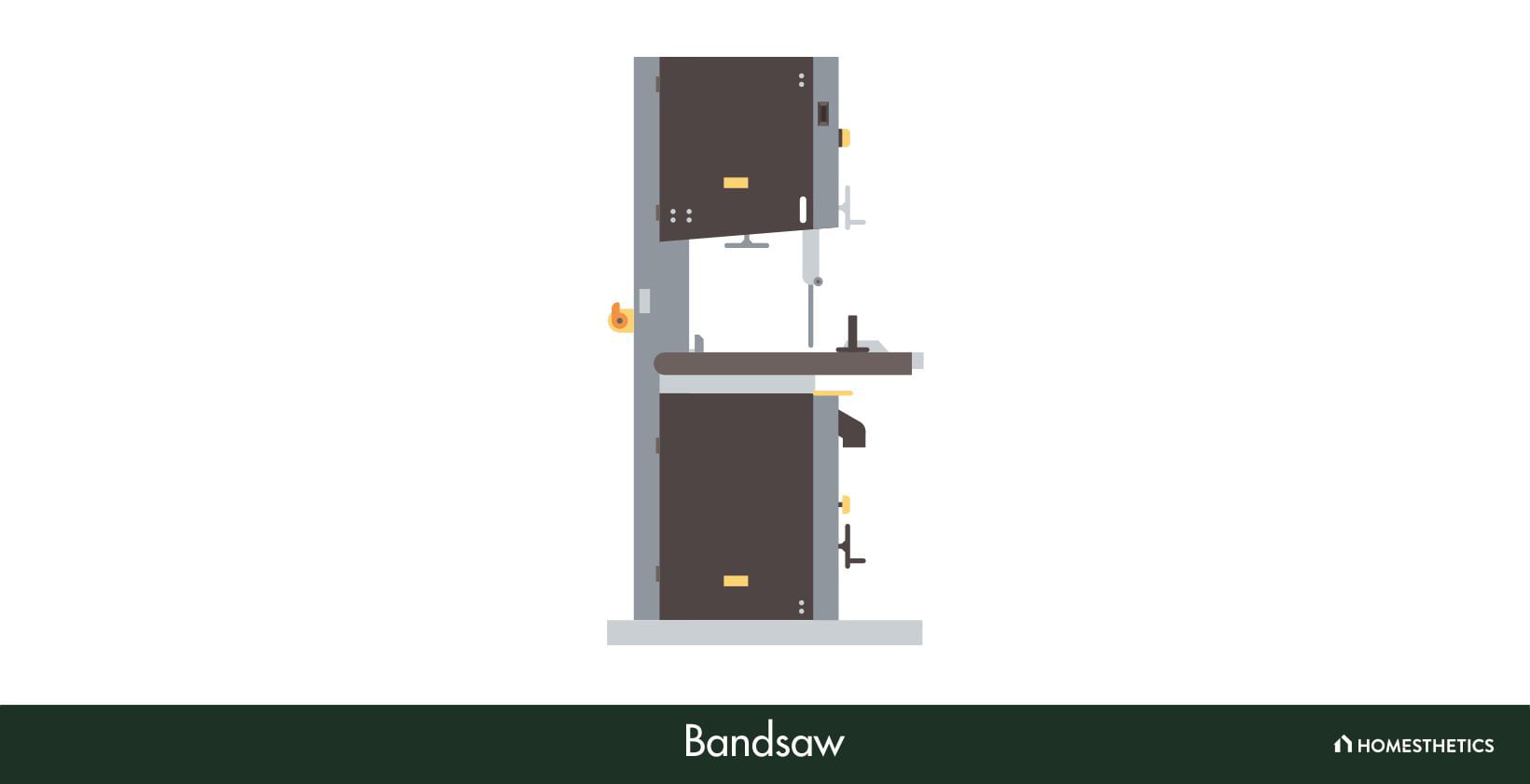
A stationary bandsaw consists of a large standing table, which has a pulley mechanism attached to it. This arrangement is used to move a motorized band that has cutting teeth embedded in it.
It’s this toothed band that performs the cutting operation in a bandsaw. These types of saws can easily cut metal, wood as well as plastic, but they’re limited by the depth to which they can cut. Also, cutting with bandsaws is an intricate operation that requires careful handling.
-
Portable Bandsaw

If you’re a moving workman who wants to achieve all the capabilities of a stationary bandsaw, then we suggest you go with a portable one. Yes! Portable bandsaws have all the benefits of their stationary counterparts.
The only difference between the two lies its portability and limited cutting depth. A portable bandsaw has the edge over a stationary one in terms of ease of use and flexibility. Hence most professionals prefer to have one in their toolbox.
-
Chainsaw
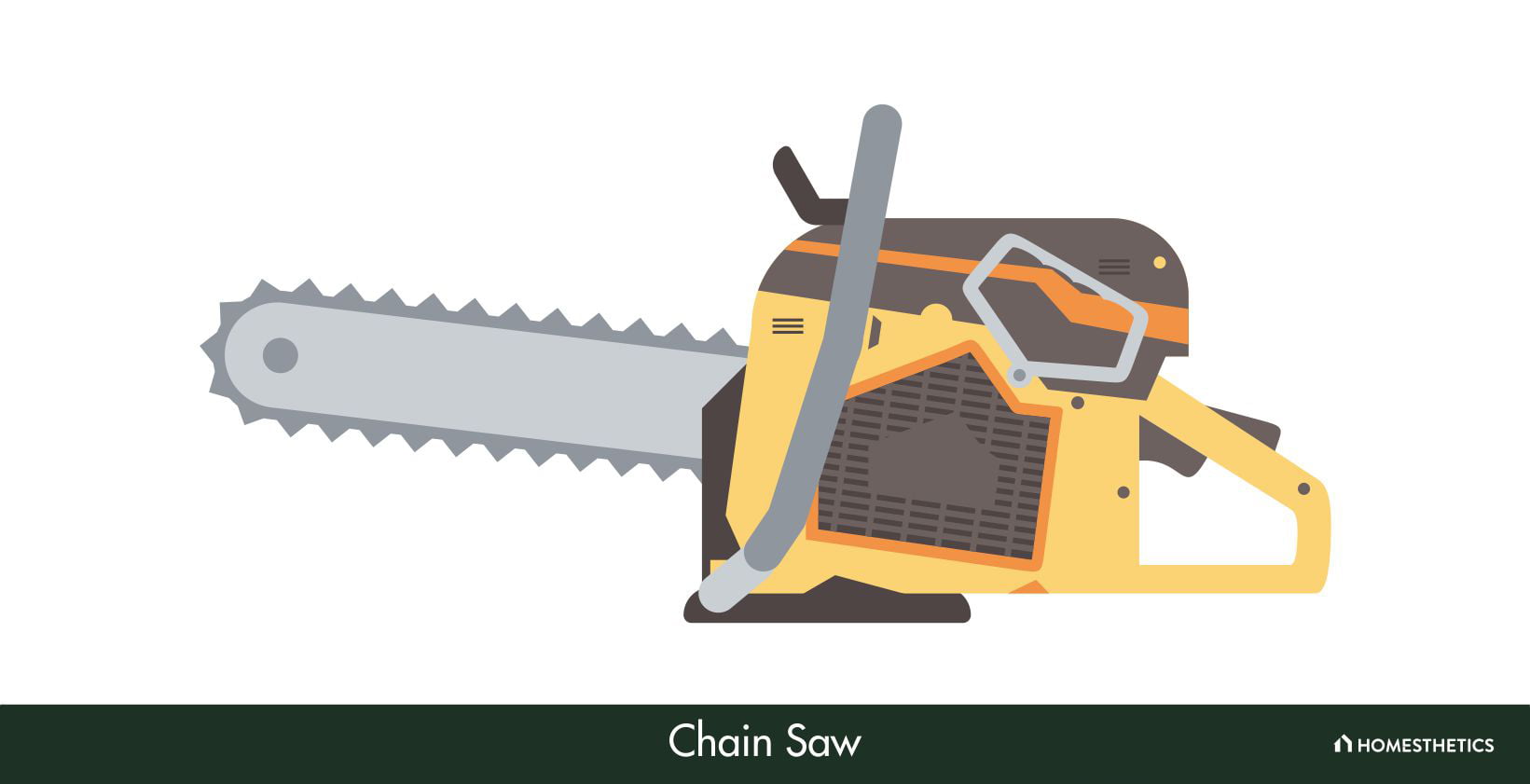
Perhaps the most famous saw of the lot, a Chainsaw is a powerful instrument driven by a strong engine. It has a toothed chain that rotates along with a linked frame and is rotated by the motor.
Chainsaws are mostly used for felling large trees or cutting through hardwood. They are very loud devices and have immense power based on the make and model. However, special expertise is needed to handle a chainsaw. In the hands of a novice, this device can easily become a hazardous contraption.
-
Chop Saw
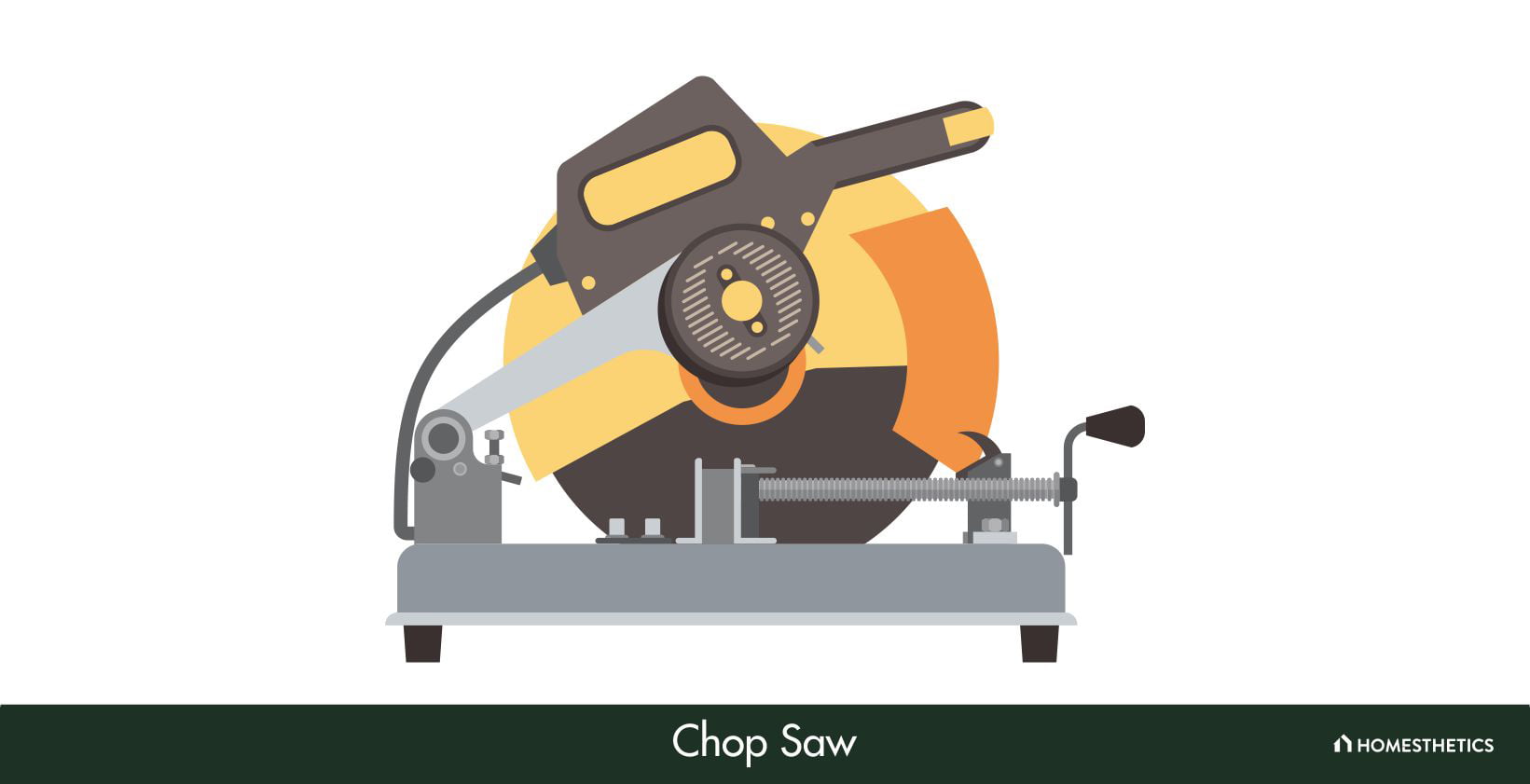
This is the portable version of the circular saw that’s a staple in most workshops. A rather large device, the Chop saw is compact enough to be carried from job site to job site. This type of saw can cut metal as well as stone.
The Chop saw blade is of the toothless variety and has special abrasives that work to cut materials. One aspect of Chop saws that must be remembered is that these devices can get very hot and dusty. That’s why many arrangements use a special water cooling system to reduce this problem.
-
Circular Saw
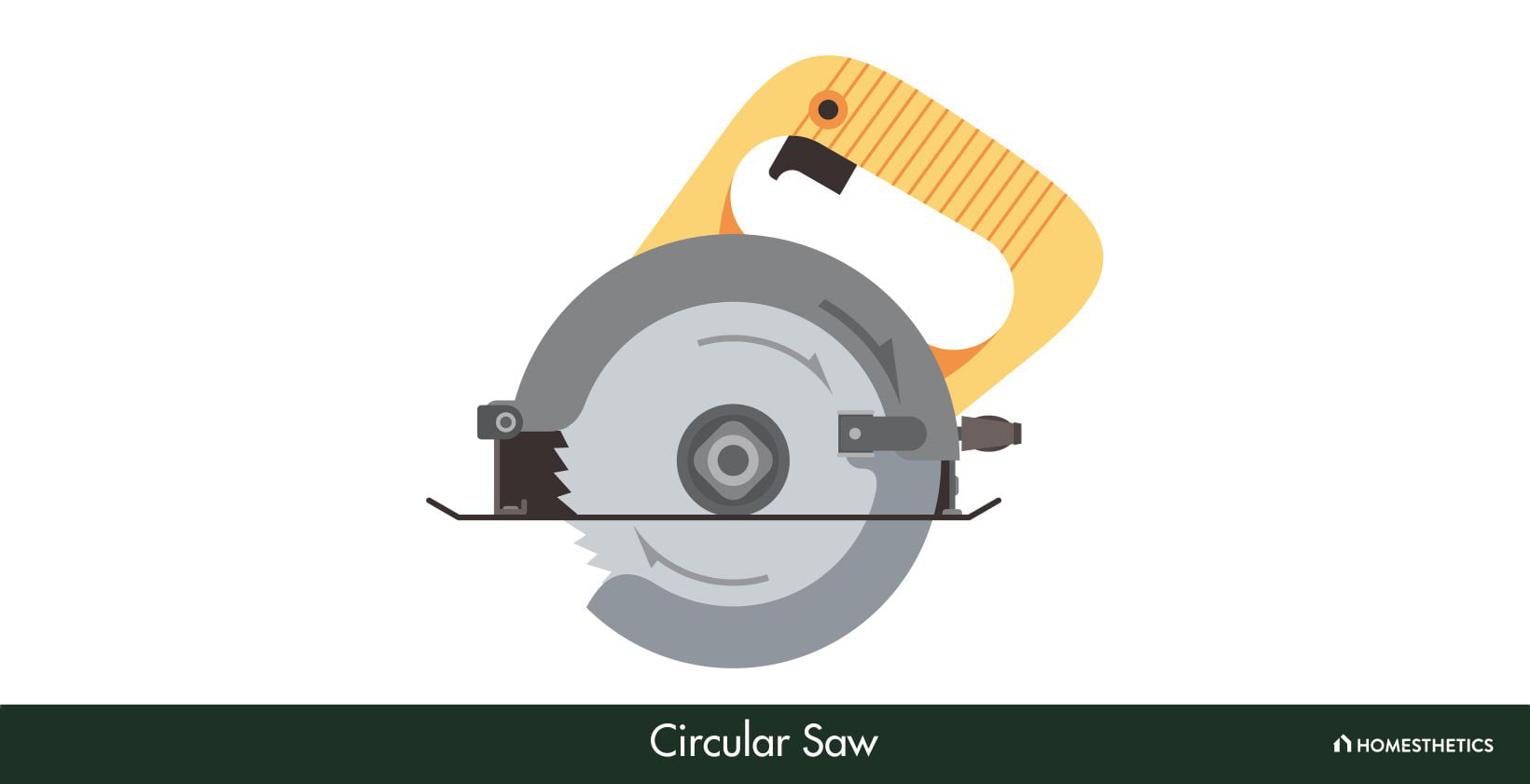
After the Chop saw, we bring you the circular saw, which is yet another versatile device. Circular saws usually have detachable circular blades that are toothed. These saws are capable of cutting anything from metals to plastics to stones.
Circular saws can go up to 9 inches in diameter and have multiple blade types that are each suitable for unique purposes. This type of saw can be subdivided into two types: the Sidewinder and the Worm drive.
A Circular saw is perfect for making cross as well as rip cuts. The blade height is adjustable and by altering this, you can get different depths of cut. Overall, it can be said that a circular saw will seldom let you down.
-
Compound Miter Saw
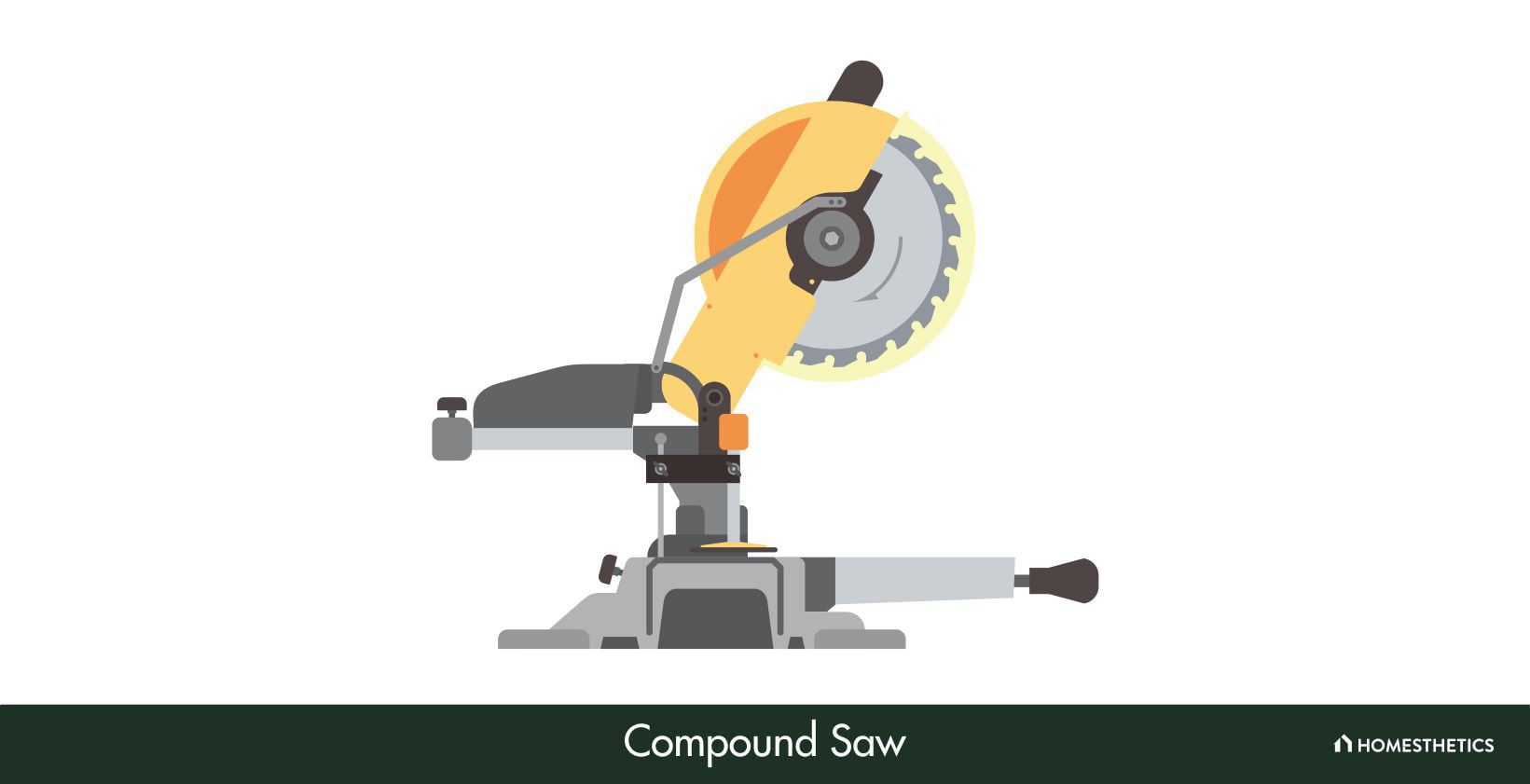
A Compound Miter saw can assist you in making straight, Miter, as well as compound cuts. This saw is characterized by a circular blade mounted on an adjustable arm that enables complicated cuts.
While a Compound Miter saw can assist you in multiple jobs, it’s best suited for adding crown moldings or for window trimming purposes. It can also be used for simplifying complicated scrollwork.
-
Flooring Saw
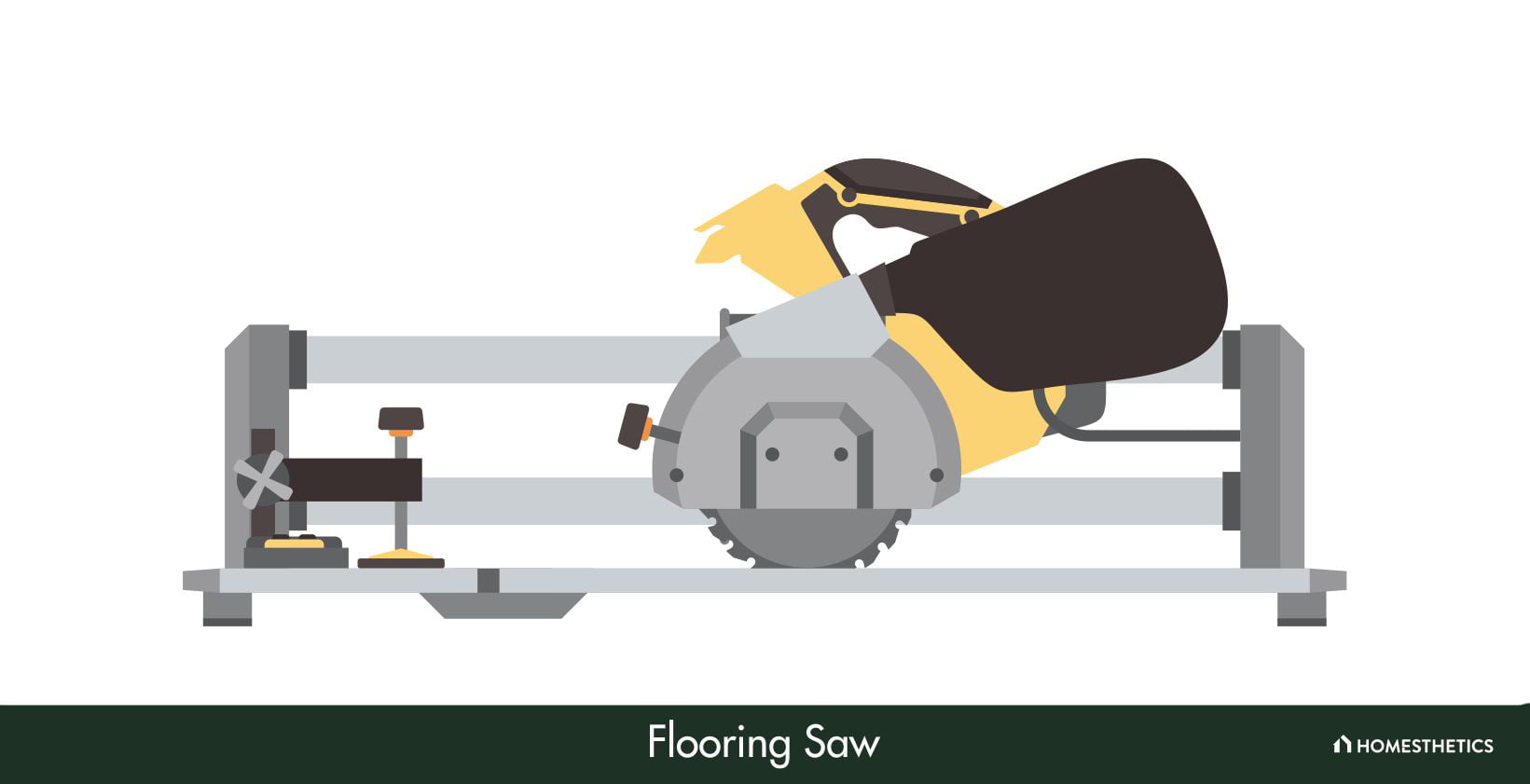
Floor cutting is a serious business, and as its name suggests, a Flooring saw is meant to assist you in resawing floors. No matter what kind of flooring you’re using, a Flooring saw is well-suited for the job.
Experts are of the opinion that with the flooring saw, you can essentially perform all the activities of a table or Miter saw. It’s a complete tool that’s guaranteed to fulfill all your floor-cutting needs. The most significant factor in favor of the device is its portability, which means you can take it where the work takes you.
-
Jigsaw
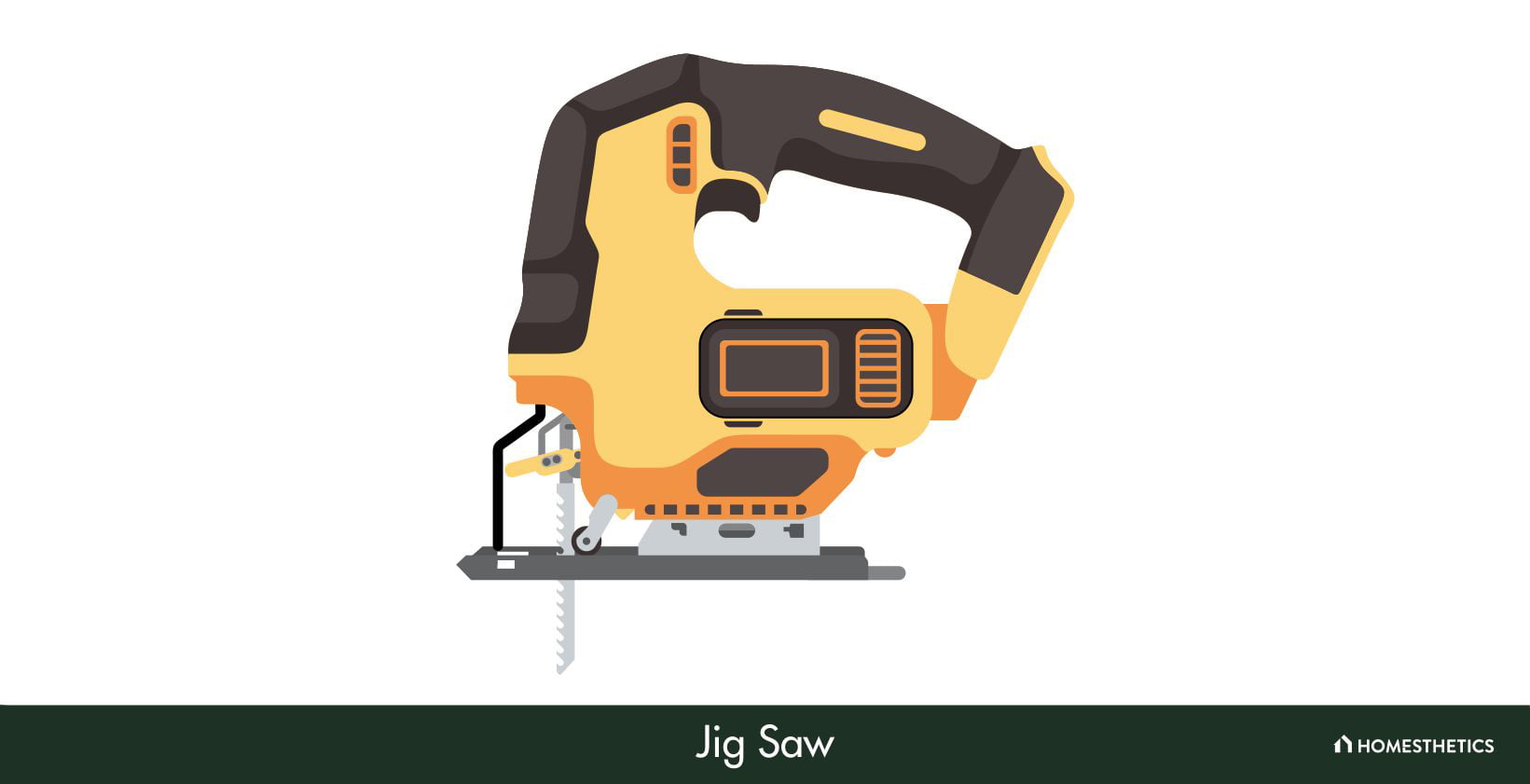
No matter what the name suggests, a Jigsaw is undoubtedly not a toy. In fact, it’s one of the most powerful power saws on the list. A Jigsaw can be easily identified by its characteristic design and curved housing that holds the blade.
The Jigsaw blade is of the reciprocating type and can be used for cutting metal as well as wood. It’s best used with sheet metal, though, and can be used to attain custom shapes in the sheets.
The Jigsaw blade is distinguished by its finely toothed edge, which helps to achieve curves and non-linear cuts easily. Jigsaw blades can move at variable speeds, and shouldn’t be used with much force, as this can cause the blade to break.
-
Miter Saw
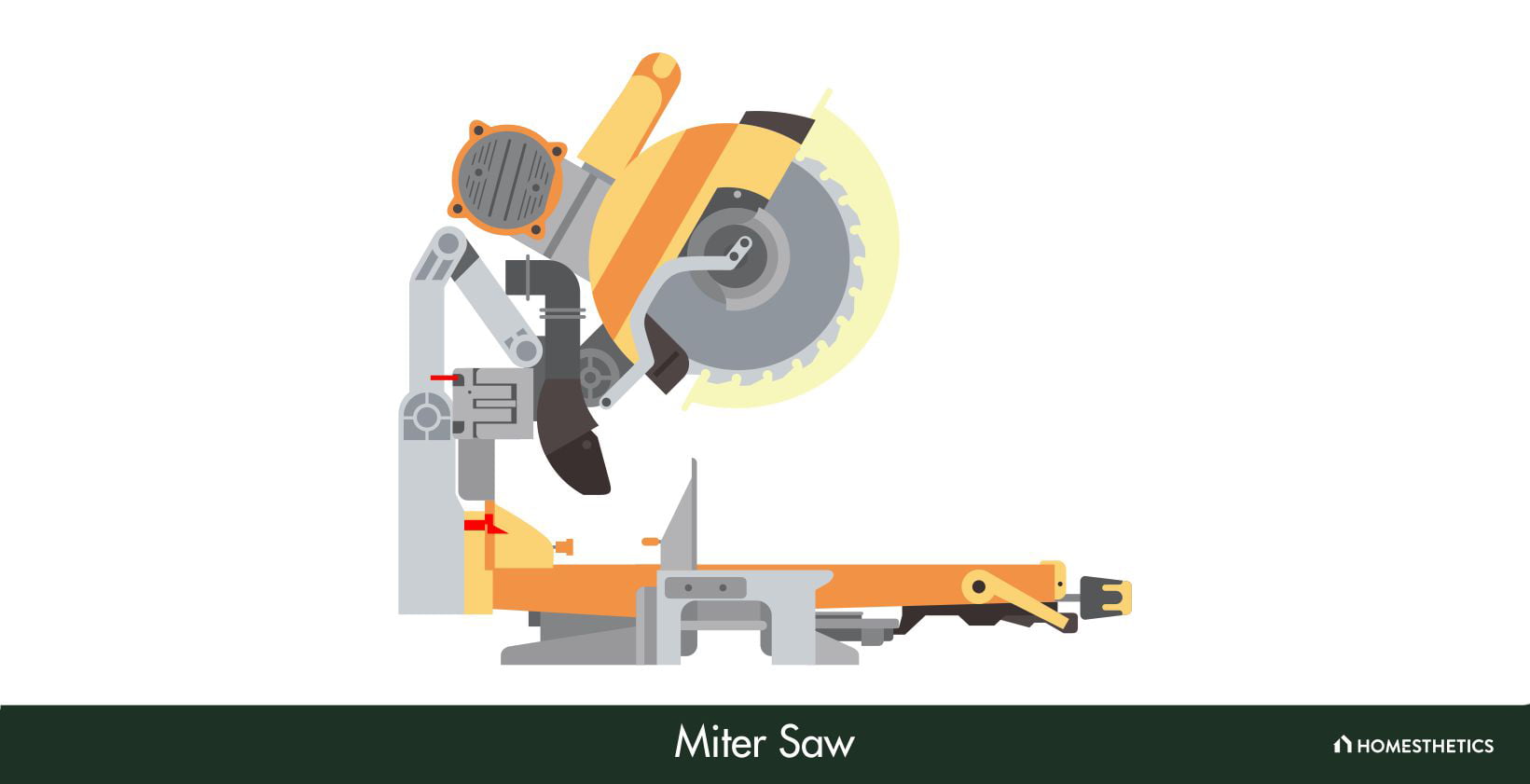
The specialty of a Miter saw lies in the fact that it provides you with accurately measured cuts. The Miter Saw has been expressly designed to fulfill the functions of a hand saw and can be used for trimming and angular cuts.
Perfect for Miter cuts and woodworking perpendicular to the grain direction, a Miter saw is also suited for frame cutting. However, everything depends on the choice of blade, which needs to be selected based on the type of work to be done.
-
Radial Arm Saw
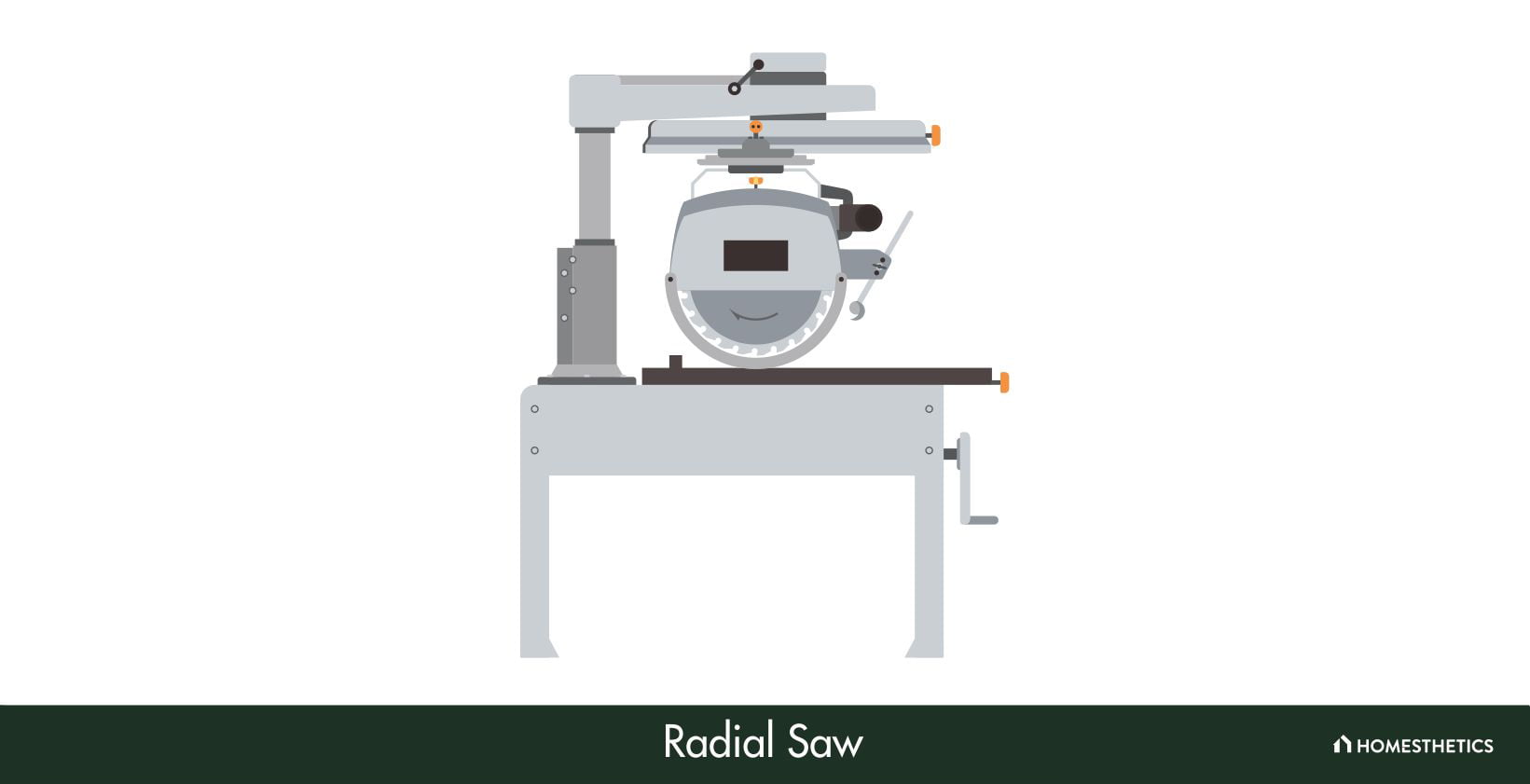
A Radial Arm saw comes attached to an extended arm protruding from a table, which acts as a base for the work material. The cutting table can be used to hold the workpiece in place while the saw performs the cutting operation.
Using a Radial Arm saw, you can easily make Miter cuts; compound cuts are also possible to achieve with this saw. Radial Arm saws also have interchangeable blades and can operate at extremely high speeds. Some of them can also be used with circular saws.
-
Reciprocating Saw
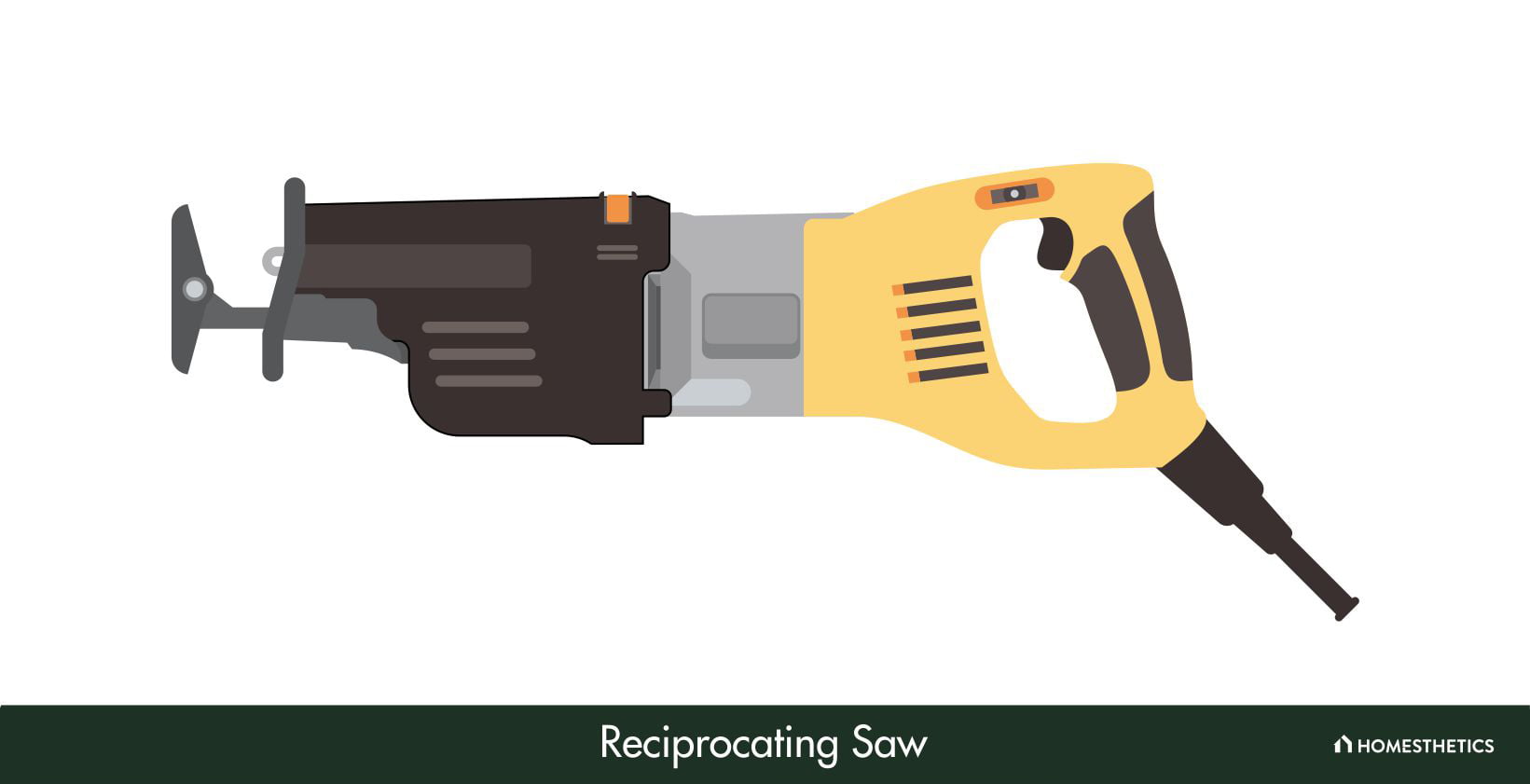
If you’re looking for a saw that’s perfect for demolition work, then the Reciprocating saw can be your best companion. Somewhat similar in operation to a Jigsaw, a Reciprocating saw blade performs faster back-and-forth motions that allow easy cutting.
When going for a device that cuts wood and metal equally well, look to the Reciprocating saw. What’s more, this saw can also be used to shape and cut plastics, which makes it a complete cutting tool.
-
Rotary Saw

As its name suggests, Rotary saws are cut using a rotational motion. The blade is fixed with the handle, and the device can be cordless or with a power cord.
Rotary saws operate at variable speeds, which makes them great for cutting through walls and wooden panels. Versatile in design as well as operation, this is indeed a very oft-used tool by professionals and amateurs alike.
-
Scroll Saw
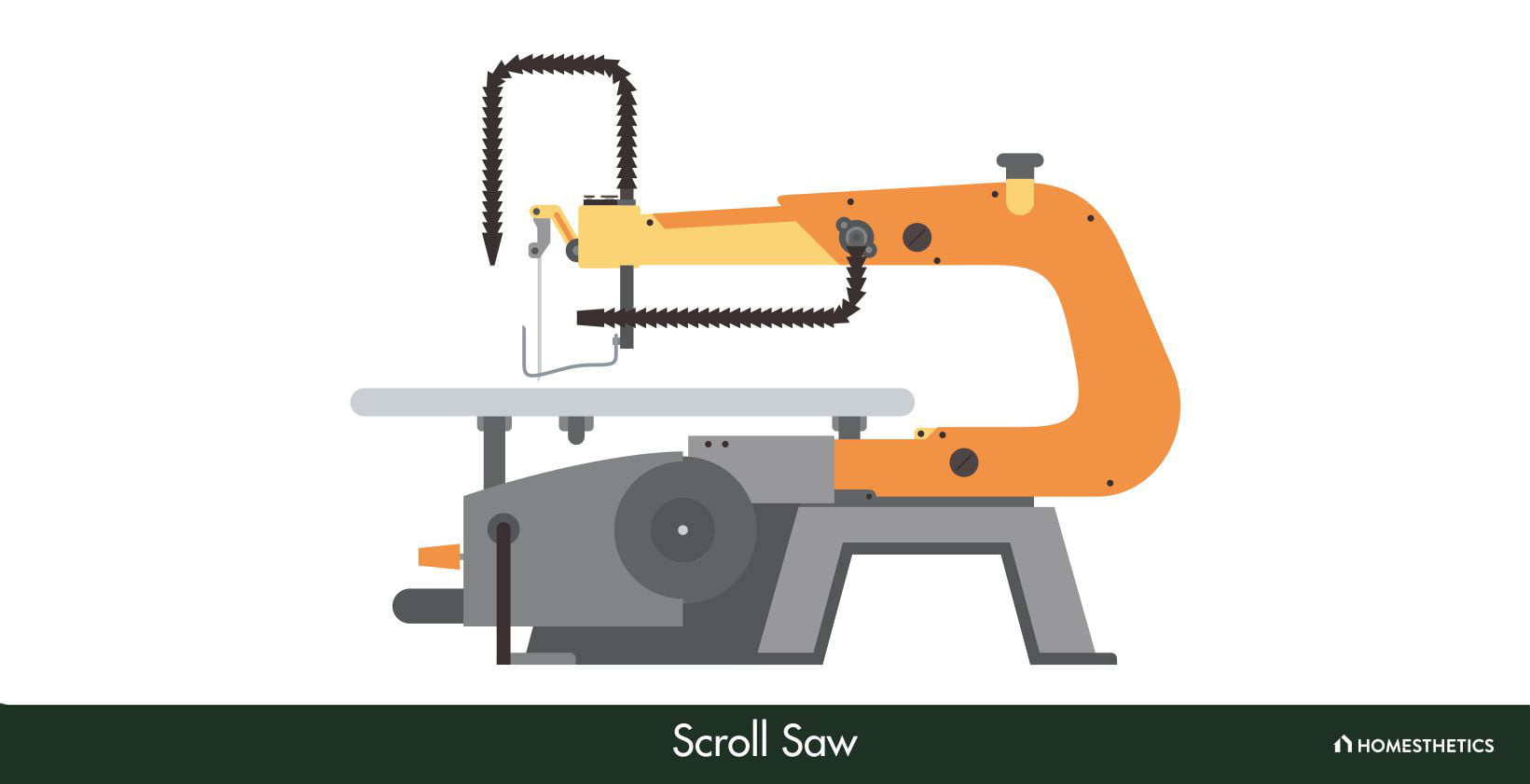
A Scroll saw is a power saw that’s used for making precise and curved cuts. Similar to a sewing machine in design, Scroll saws can have reciprocating or continuous blades. What’s more, it can even operate with a saw band.
One of the most significant advantages of a Scroll saw is that it comes attached to a table. This allows the workpiece to be laid quickly and enables the cutter to achieve precise detailing. Scroll saws are particularly adept at precision cuts that incorporate curvatures.
-
Table Saw
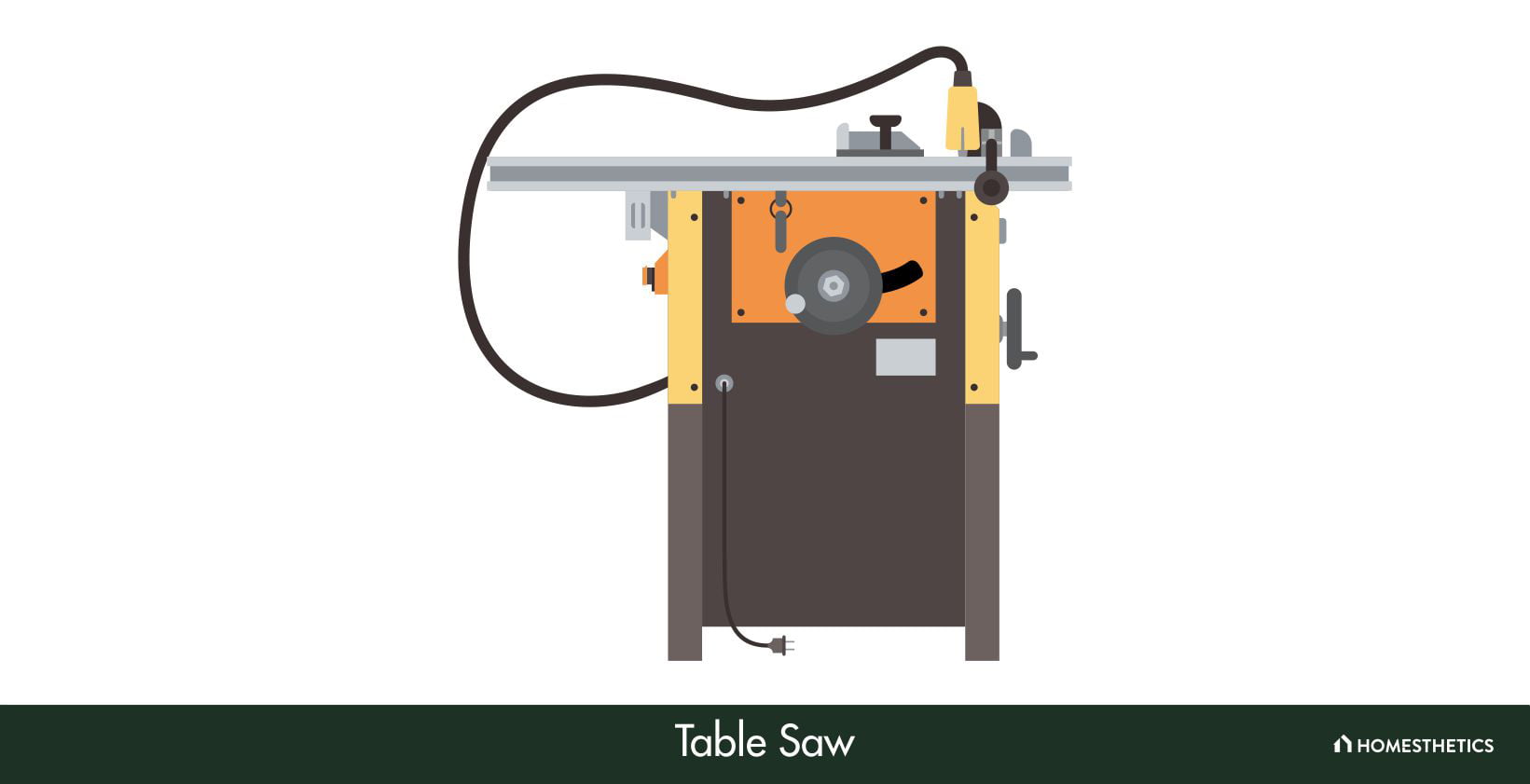
Needless to say, a Table saw comes with a table, and this makes the laying of the workpiece a much easier task. The saw motor is located beneath the table, and the blade embedded in the table bed can be adjusted for the depth of the cut required.
Table saws have removable blades, but these need to be compatible with the saw motor. Using a Table saw requires extreme concentration as accidents can easily happen otherwise. However, modern Table saws have advanced safety features that prevent this from happening.
-
Masonry Saw
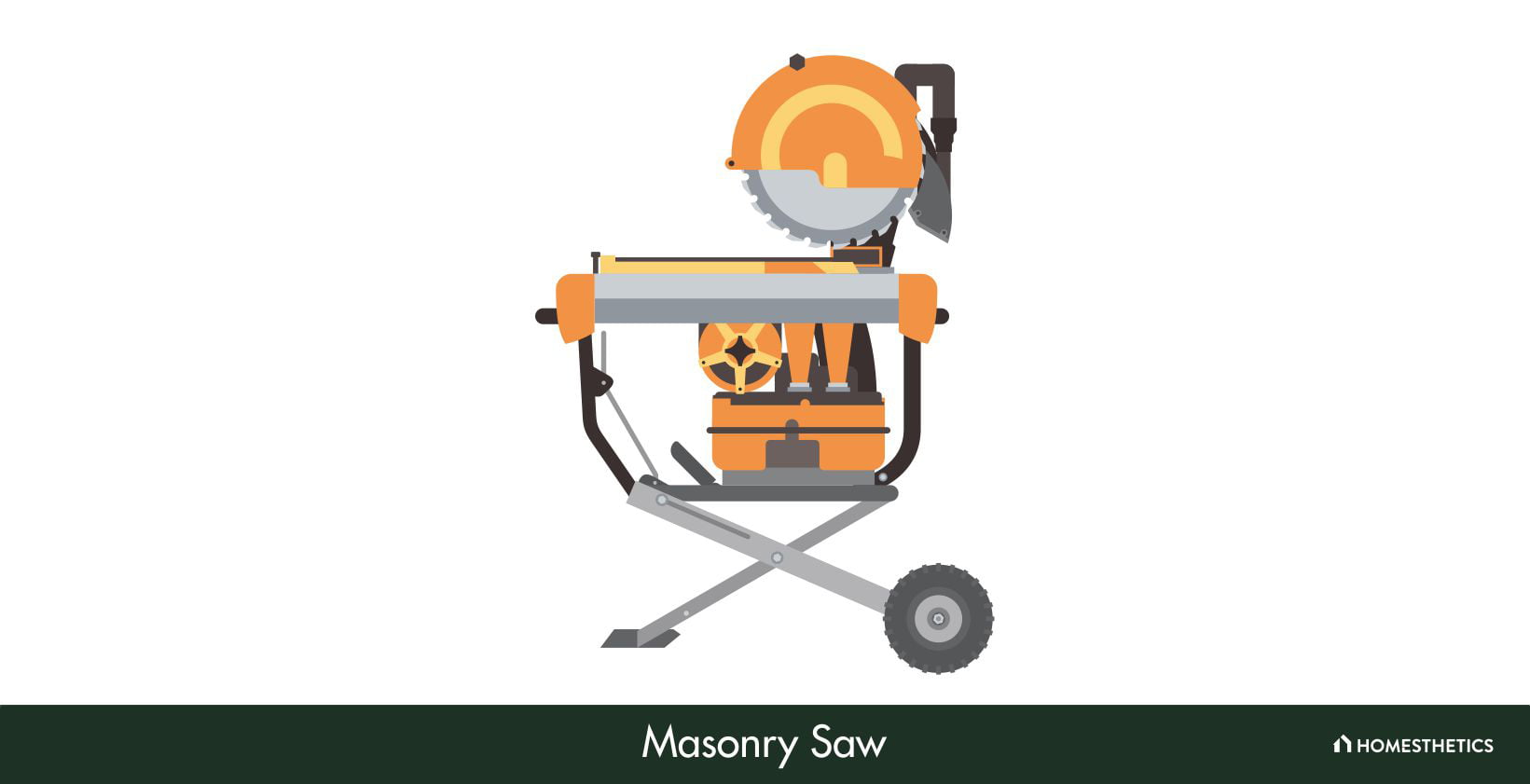
This saw type is primarily used for construction purposes and is designed to operate with pushing strokes. The saw comes with a pistol grip handle and a circular, removable blade that has large serrations.
In this type of saw, the gap between the teeth is slightly larger than regular hand saws. This makes a Masonry saw perfect for cutting concrete and stone blocks. However, these saws usually generate a lot of dust and debris; hence they are typically fitted with gullets that can carry this waste.
-
Oscillating Saw
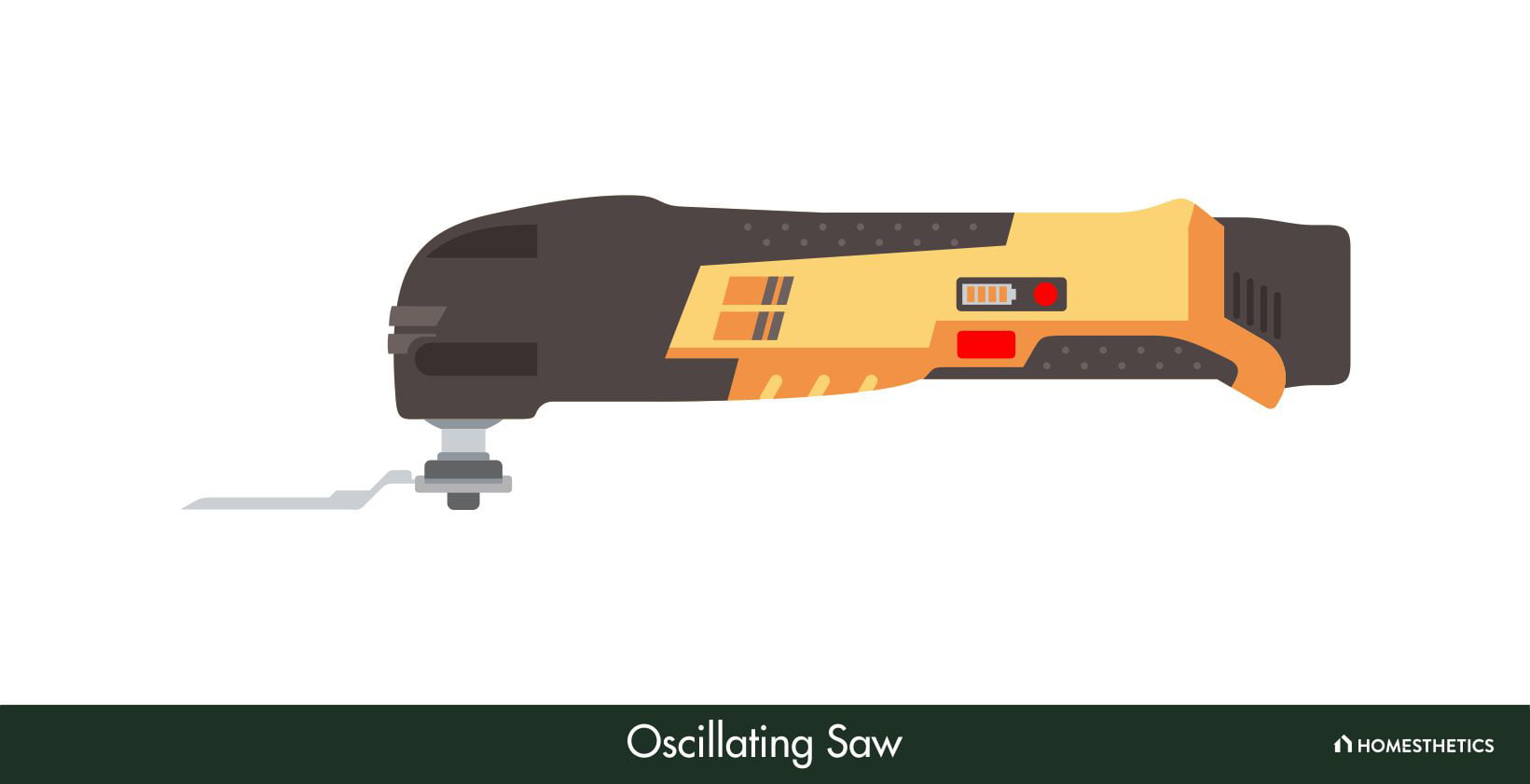
An Oscillating saw is ideal for a large variety of purposes. Whether you’re looking for cutting, sanding, or grinding, this saw can get the job done. Clean and fast in operation, Oscillating saws make for clean cuts and don’t produce much dust.
The oscillating saw has an elongated housing that serves both the handle and the motor seat. The saw blade is short and helps cut in constrained spaces. What’s more, since the blade of this type of saw vibrates in variable arcs and speeds, they can be used to make better, more angular cuts.
-
Track Saw
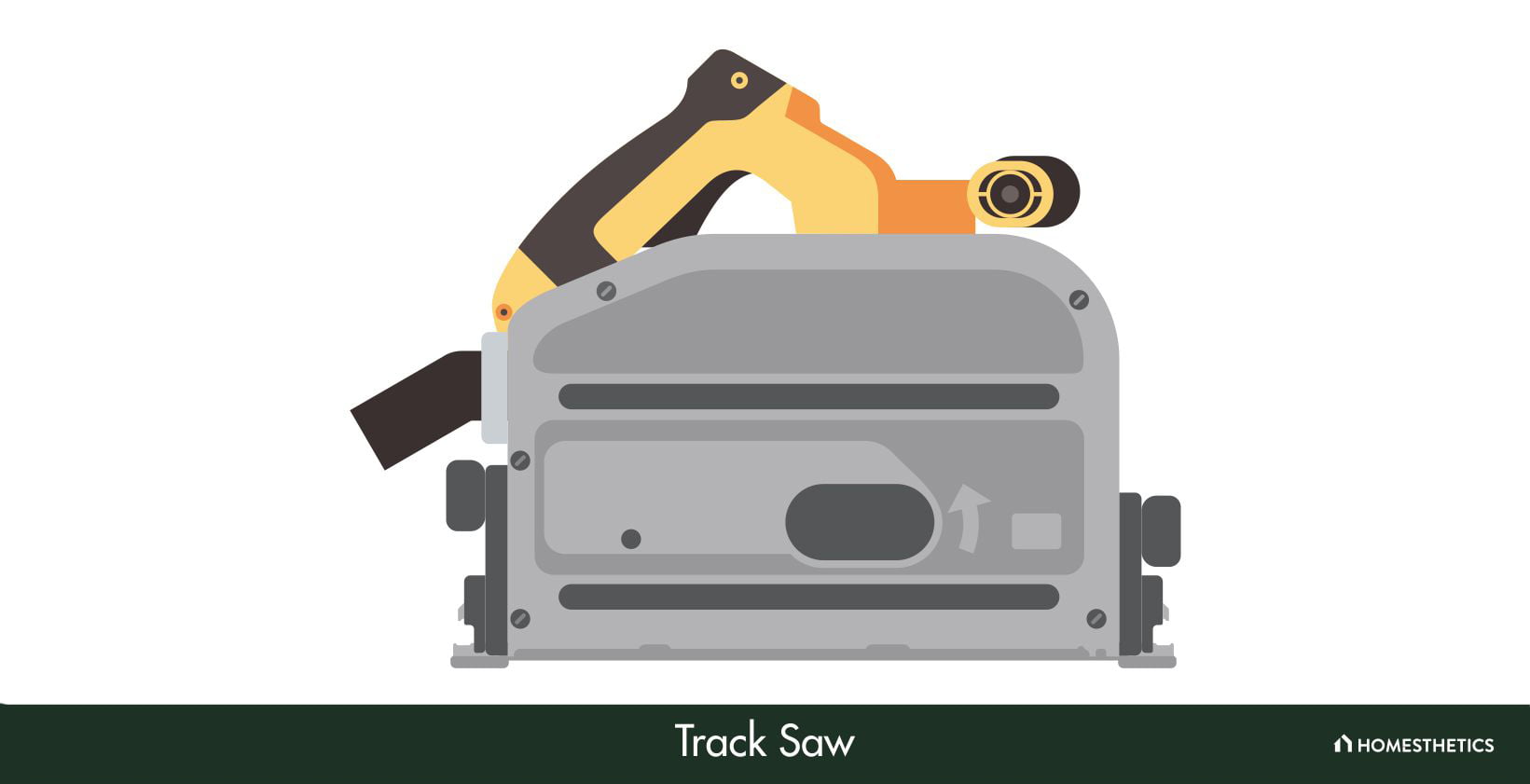
If effortless sawing is what you’re looking for, then the Track saw is the best bet for you. A combination of circular and table saws, this is a device that makes cutting and sawing a smooth task.
The saw comes attached to a guide rail, which sticks to the surface of the workpiece/material to be cut. This ensures that the saw doesn’t glide or move away from the expected cut line. Now, all that’s needed to be done is to fix the saw on the rails and cut away. The only drawback of this saw is that it can cut only along straight lines.
-
Tile Saw
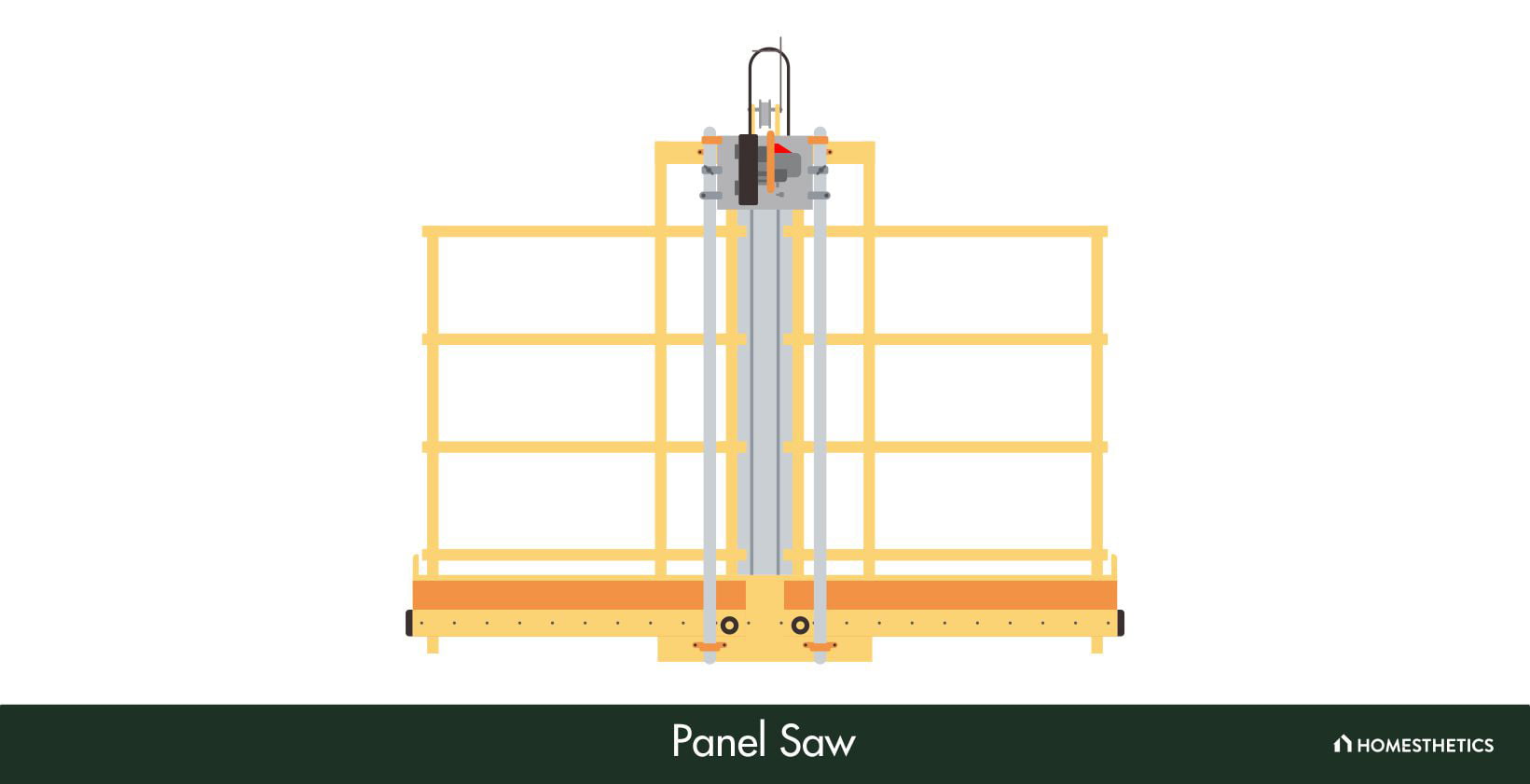
The final item on our list is the tile saw, which is used to cut through tiles of different shapes and sizes. The design of a Tile saw is similar to the Miter saw, and it can be used to cut glass as well as ceramics with equal ease.
A Tile saw blade is usually coated with diamond, which makes it one of the hardest and most durable saw blades available. However, this saw generates a large amount of heat and dust, which is why it uses a water reservoir to cool the system and reduce dust formation.
Different Types Of Saws Verdict
Now, this has been a long list, and we hope you’ve enjoyed every bit of it. For any professional or DIY enthusiast, the above list can act as a comprehensive resource on all things saw.
After going through the above list, you can easily decide on the kind of saw that you need to complete any project. Whether you’re looking to complete a professional contract, or merely searching for a device for small household tasks, this list has something for you all.
And yes, if you feel we’ve left out any saw type that should’ve been included in the list, do let us know. We’ll be glad to include it in the next iteration of the list.
Till then, saw with care!
Related Articles
Simply the Best Stained Glass Ring Saws
49 FREE DIY Router Table Plans For an Epic Home Workshop
Top 10 Longest Pole Saws For Tree Pruning
11 Best Sliding Compound Miter Saws
Single Bevel Vs. Double Bevel Miter Saw
9 Best Hybrid Table Saws Under $1000
11 Best Budget Bandsaw Reviews
11 Best Dry Cut Metal Chop Saw
Bosch 4100-10 Jobsite Table Saw
9 Best Compact Circular Saws Of 2023
